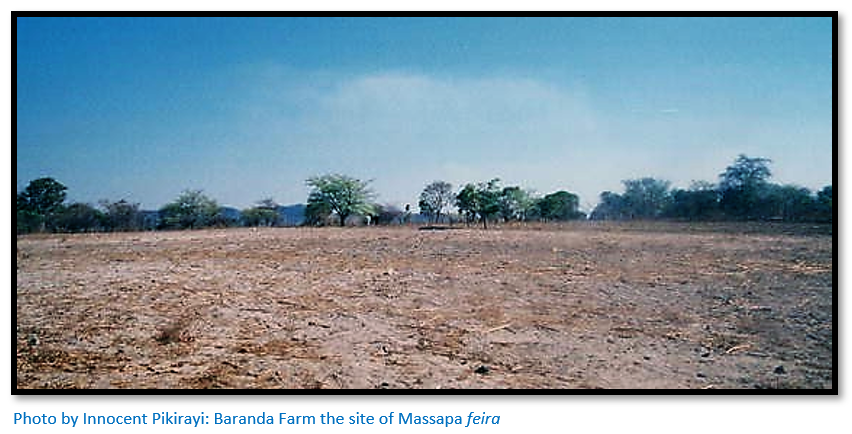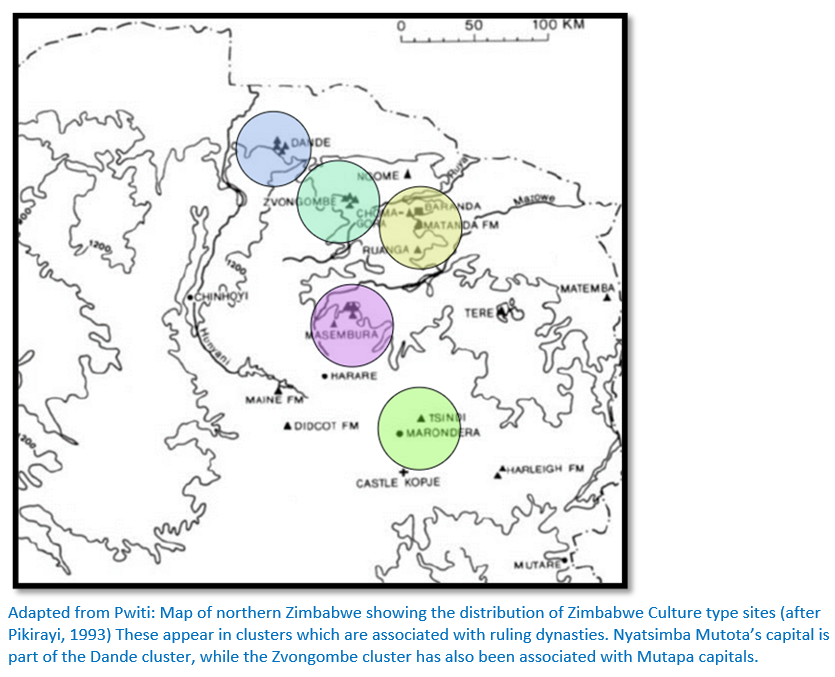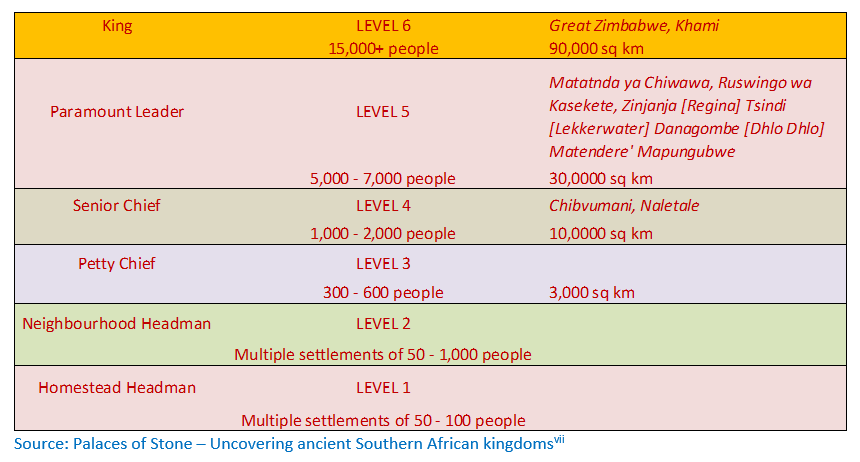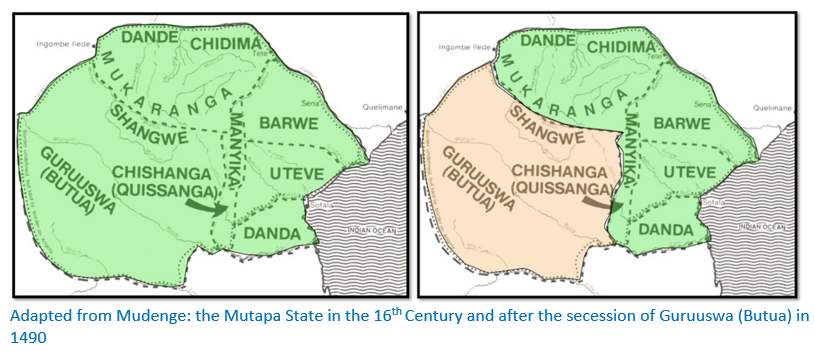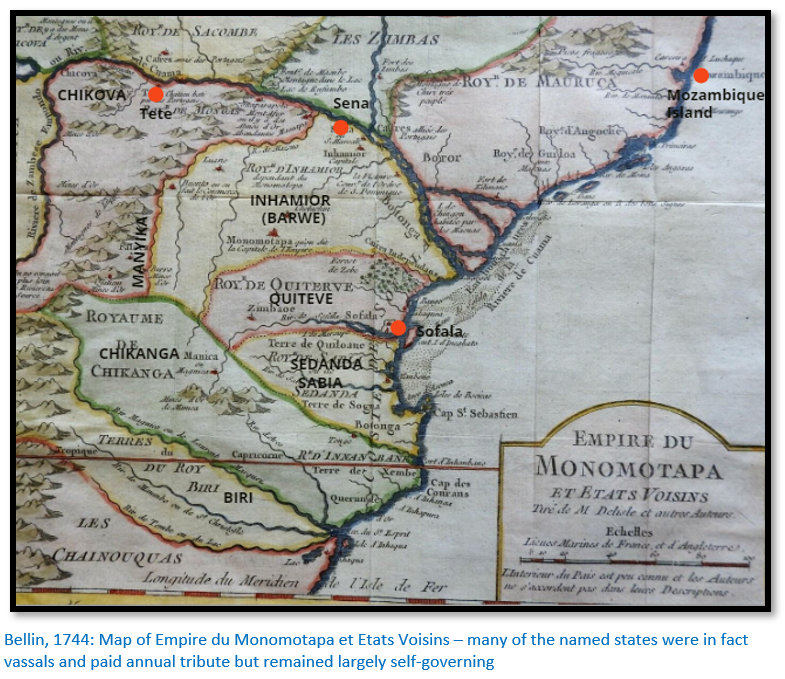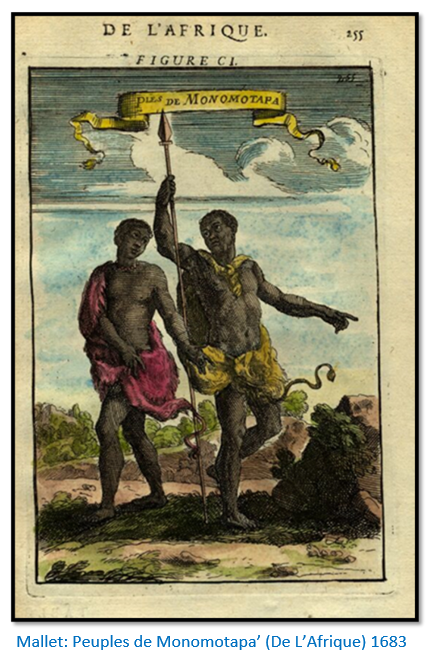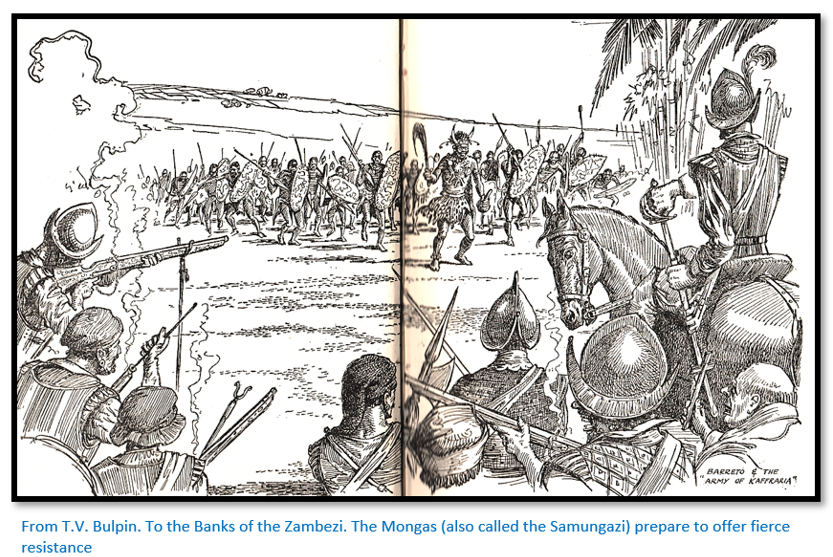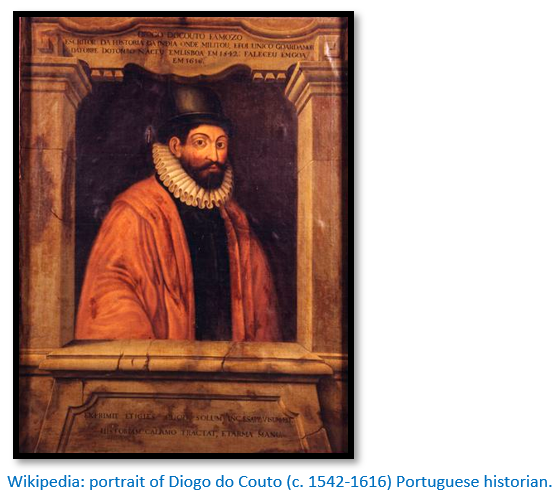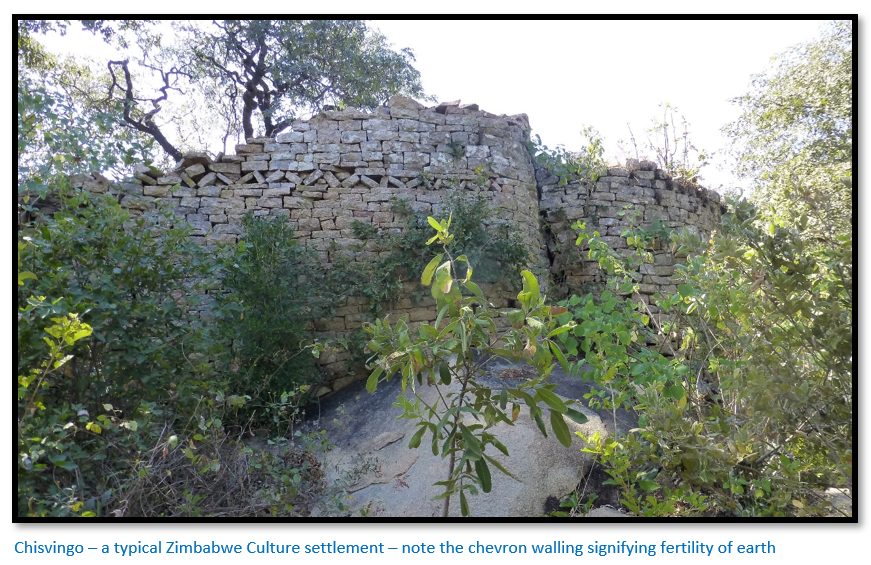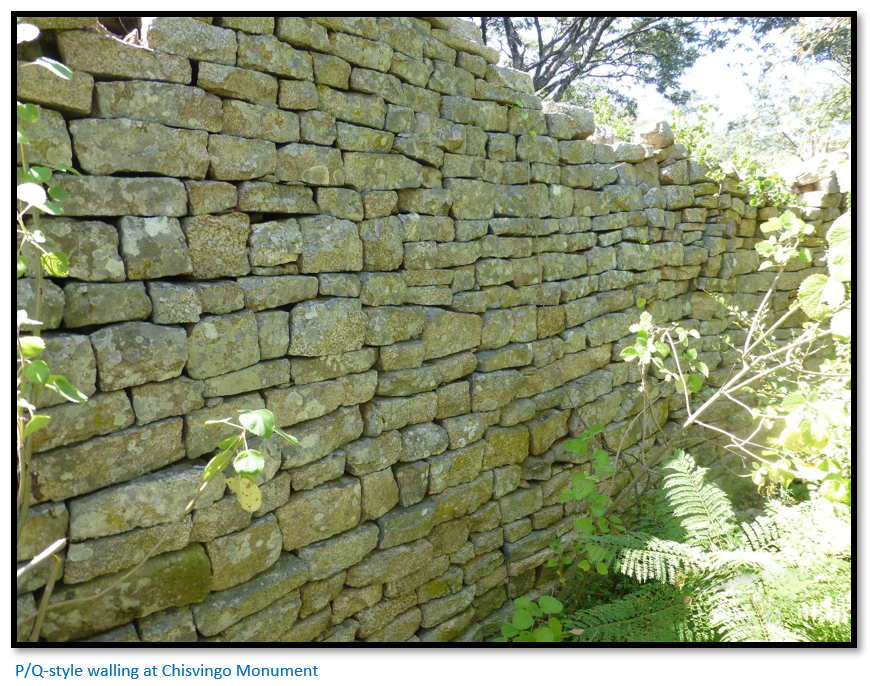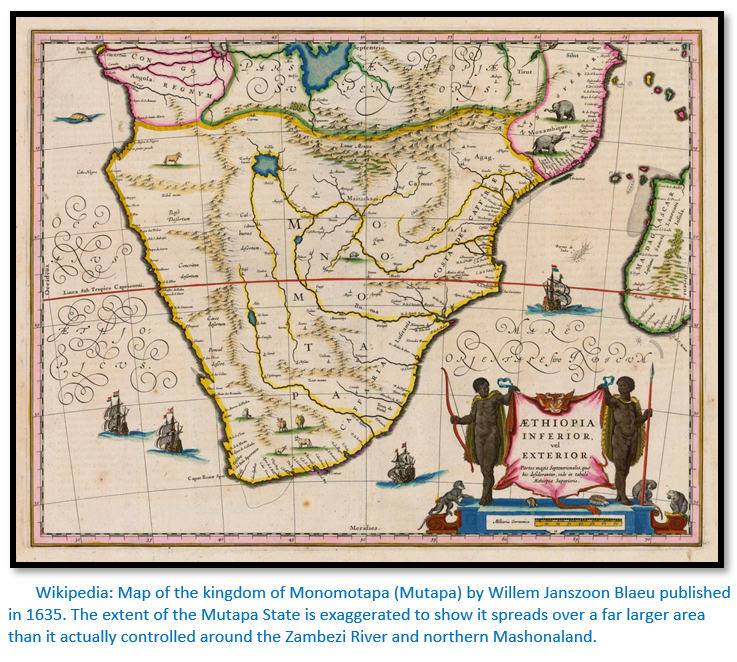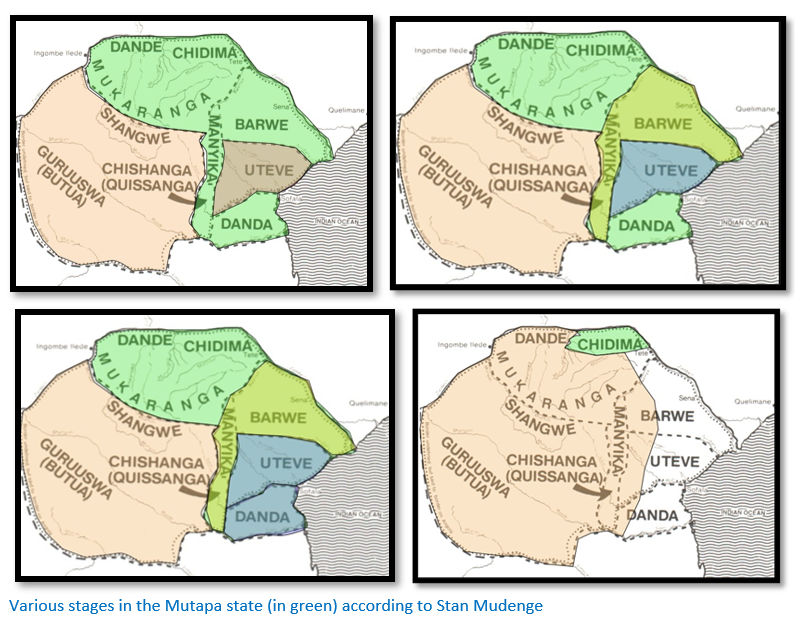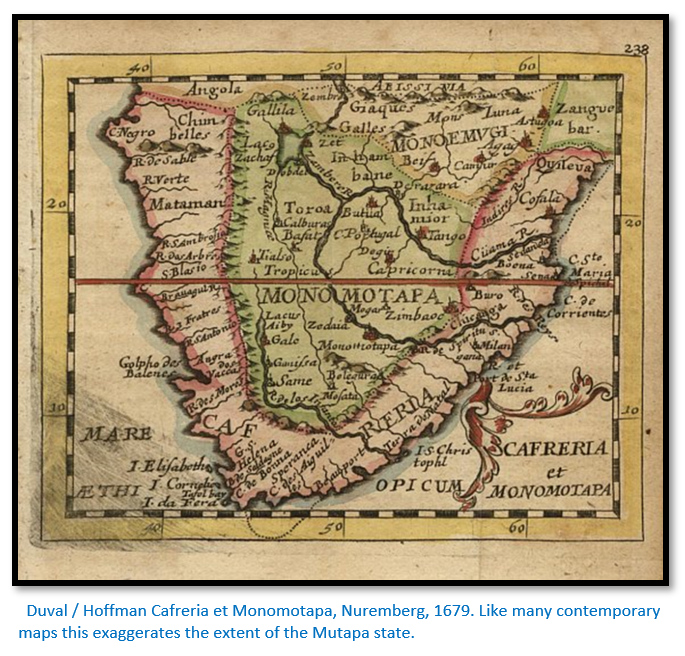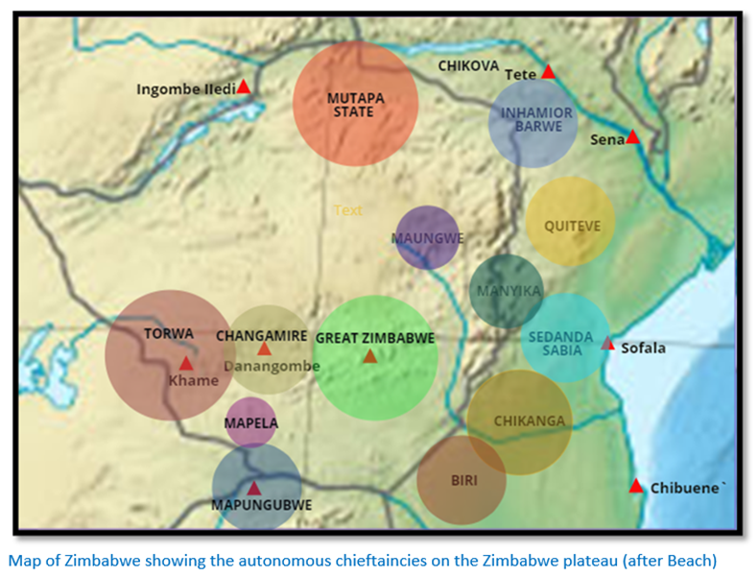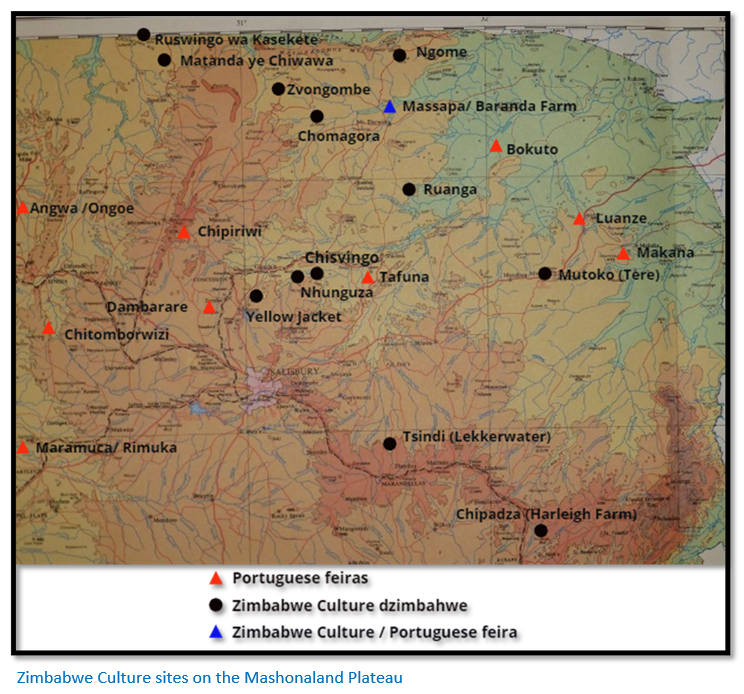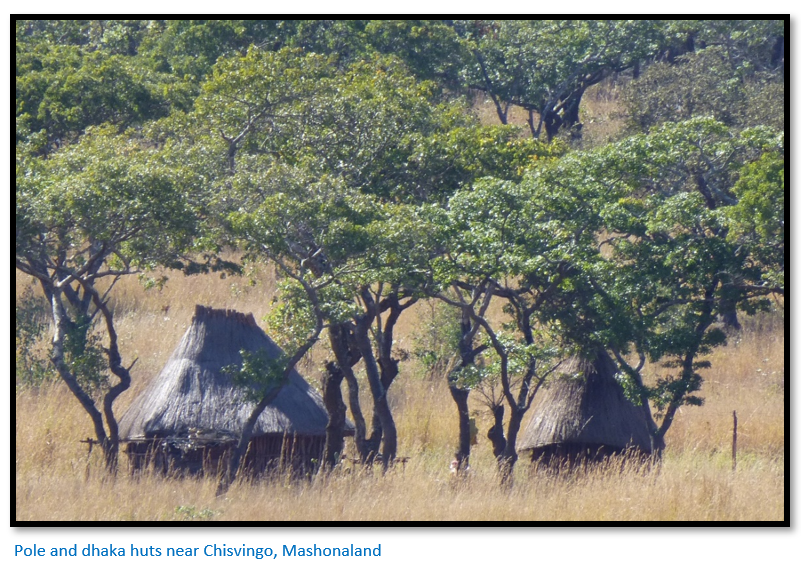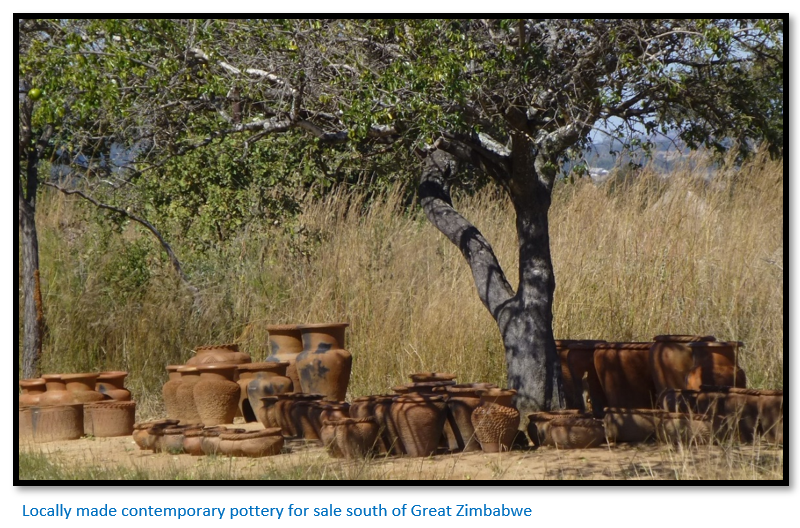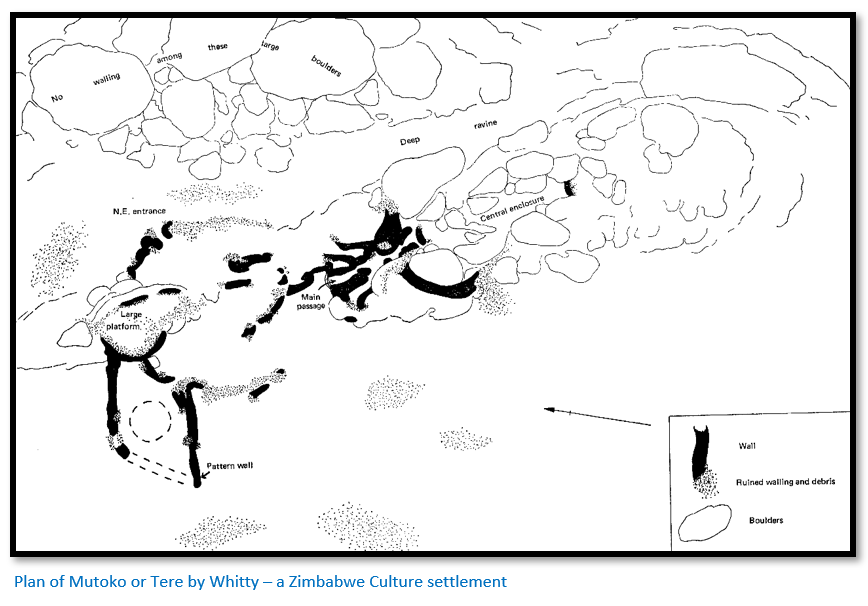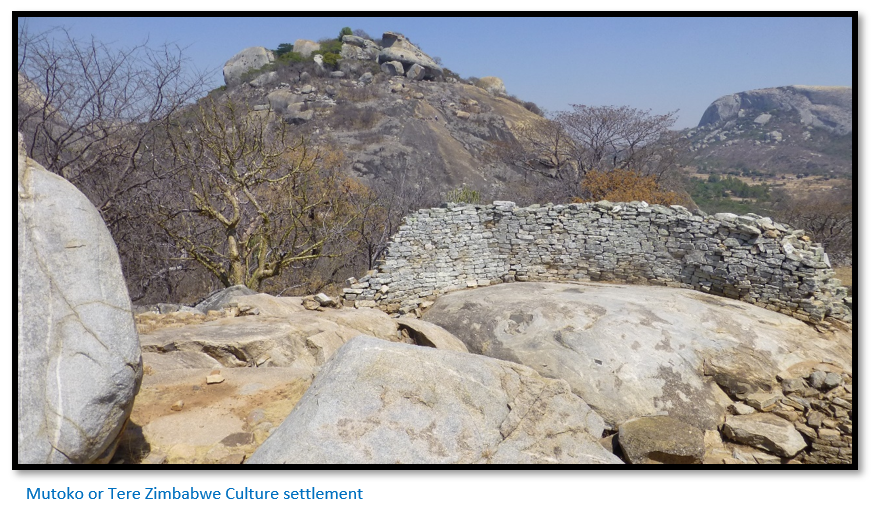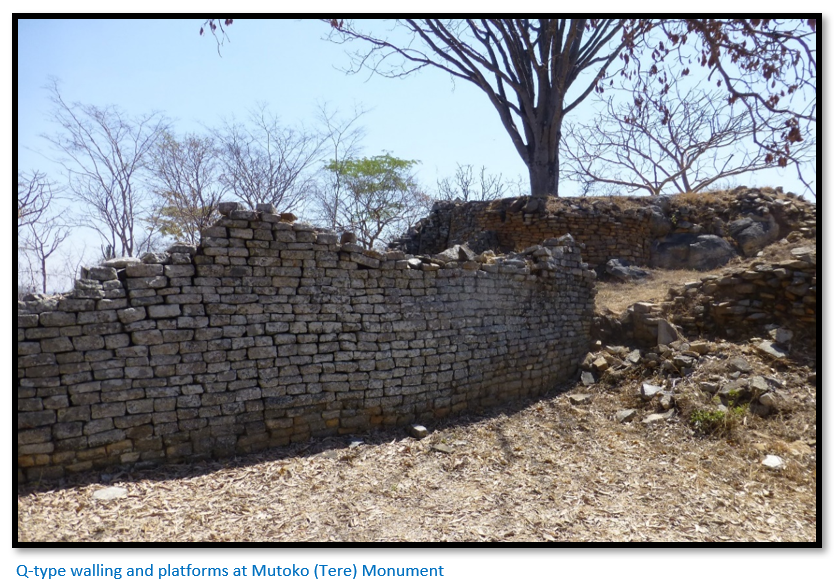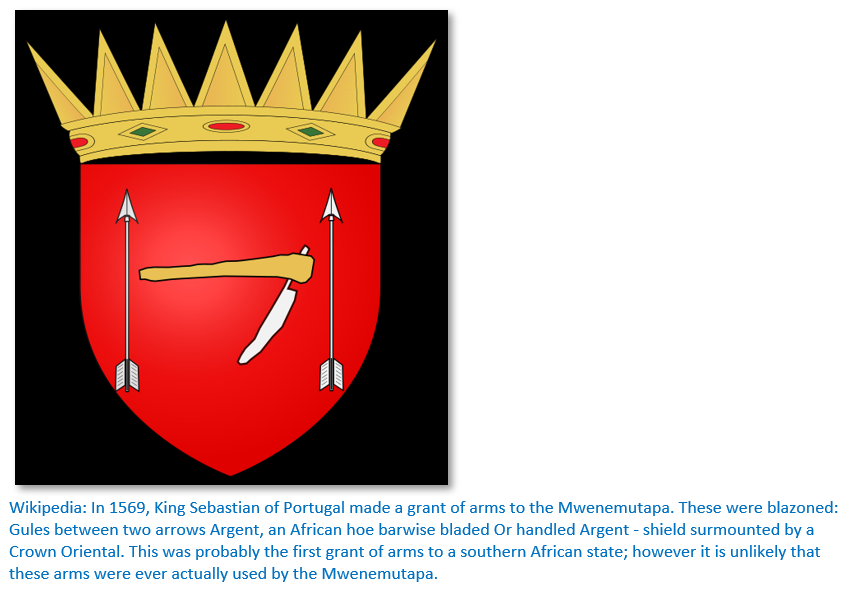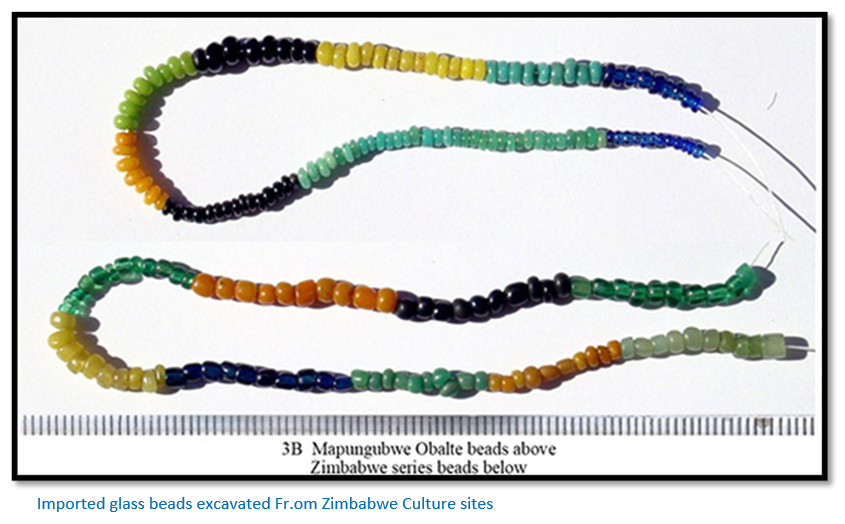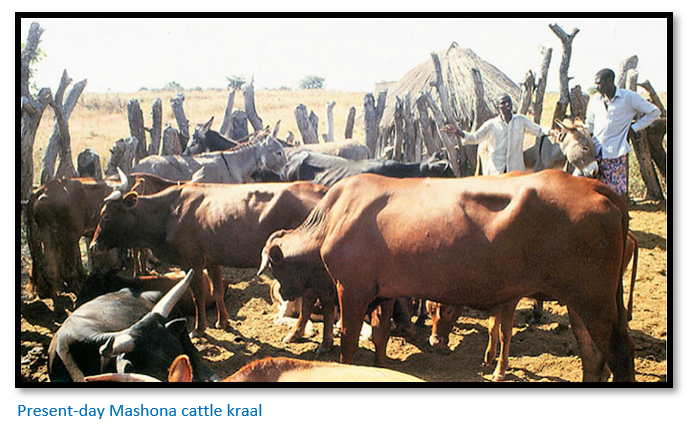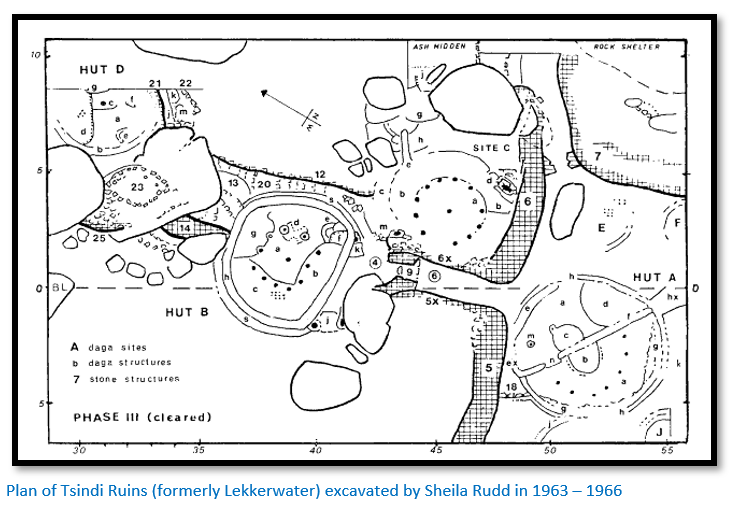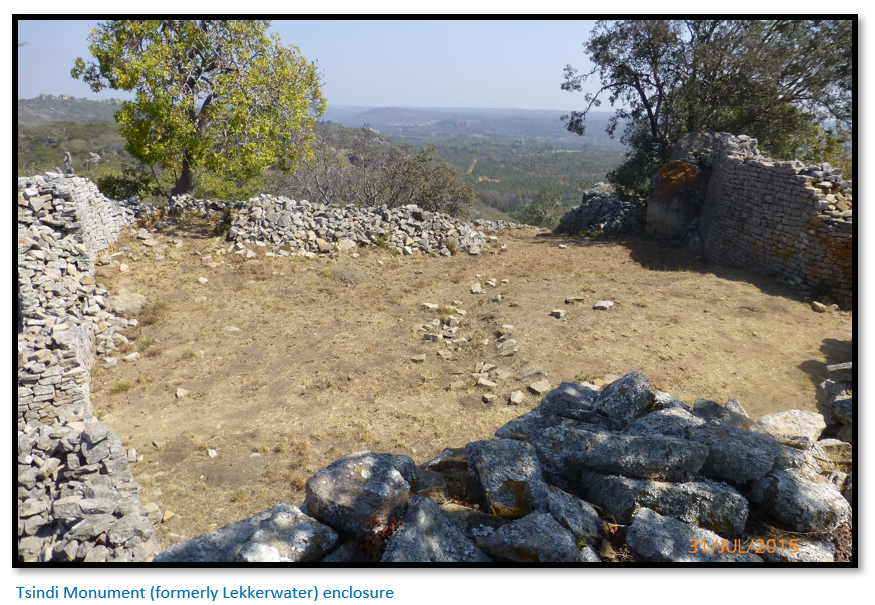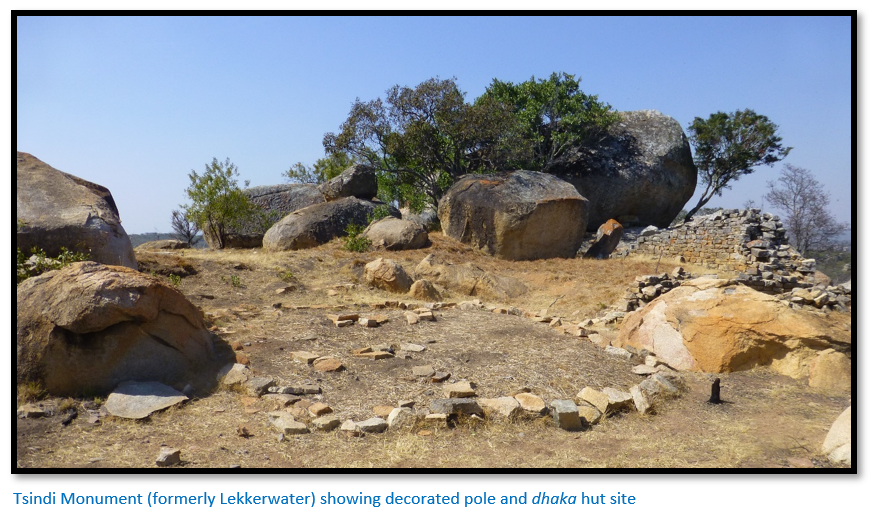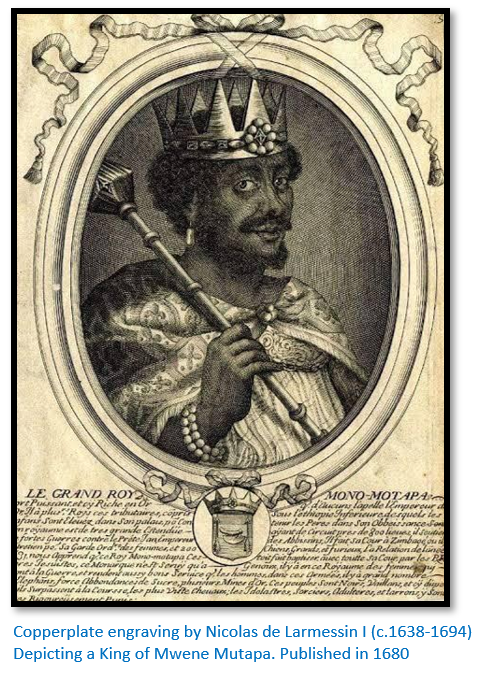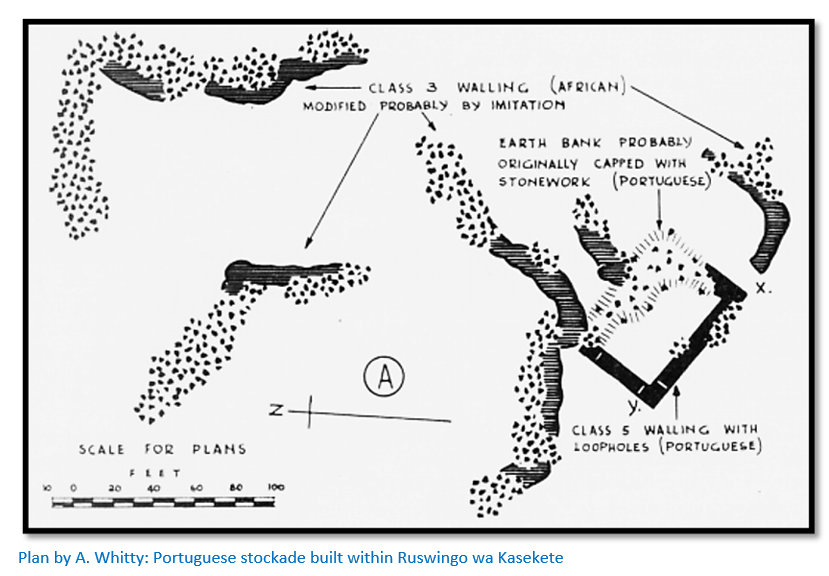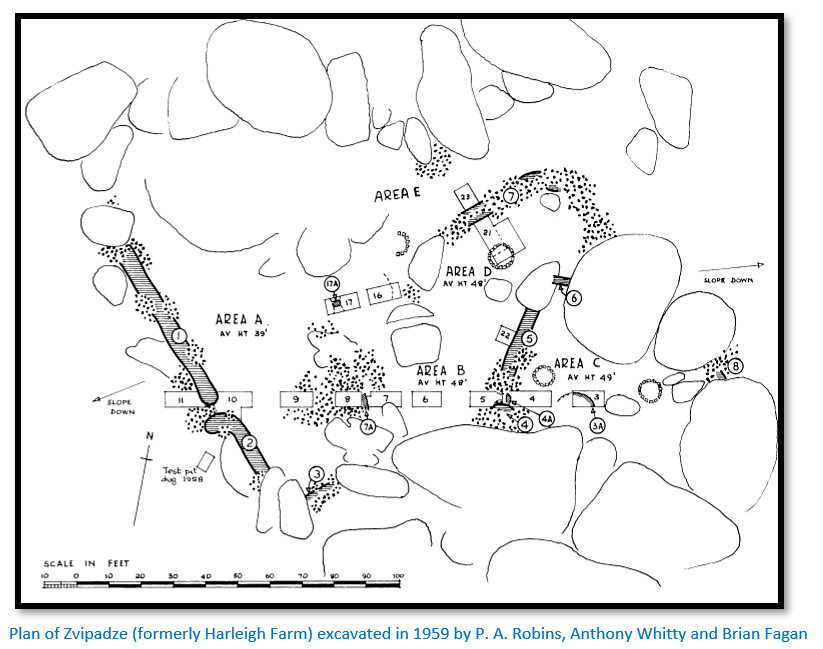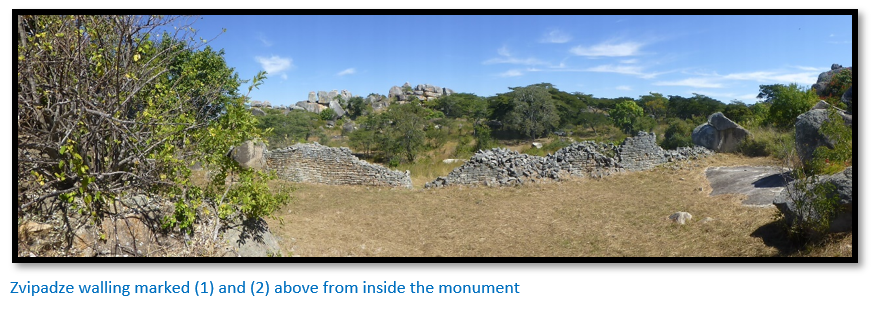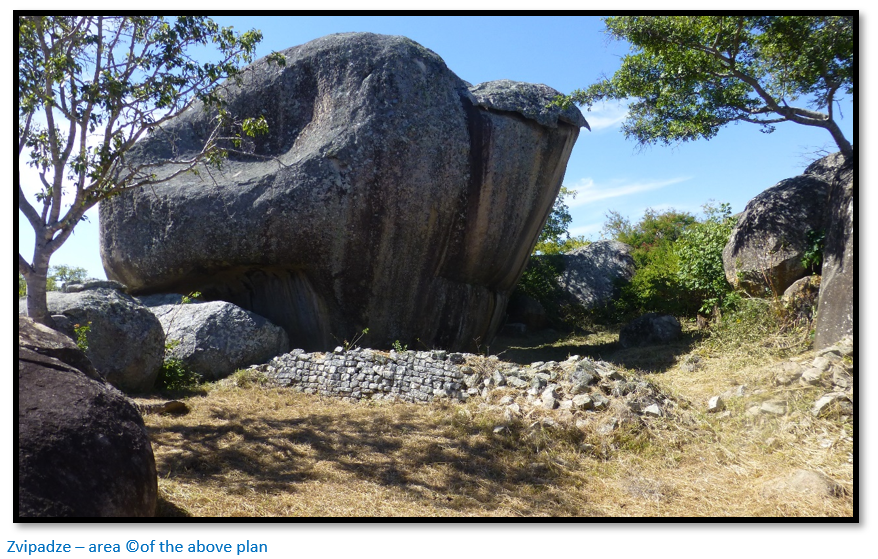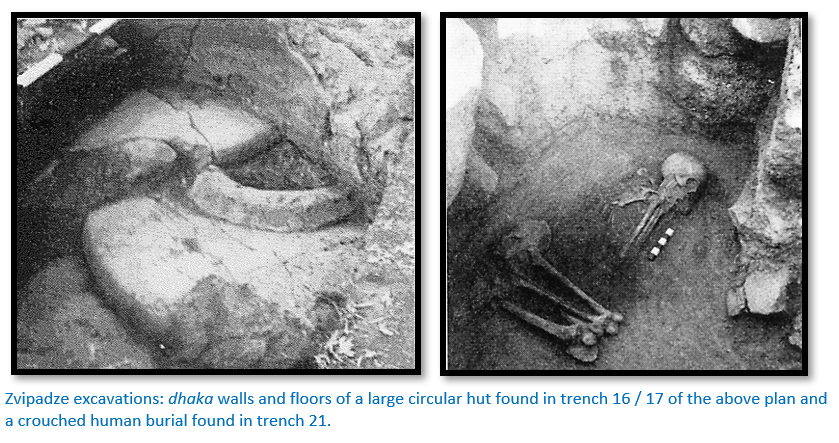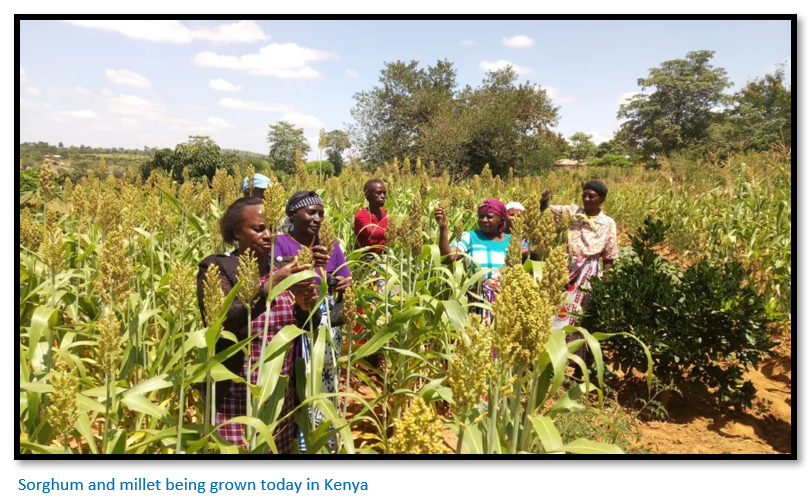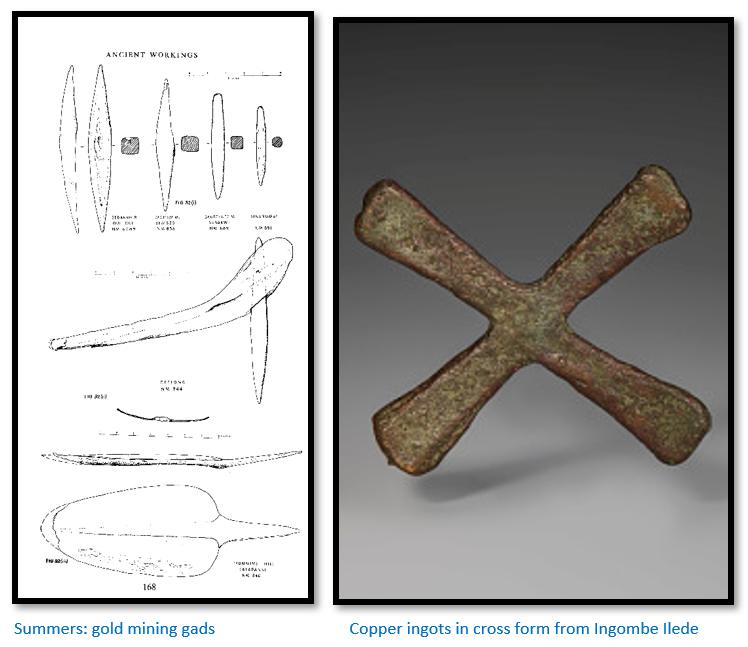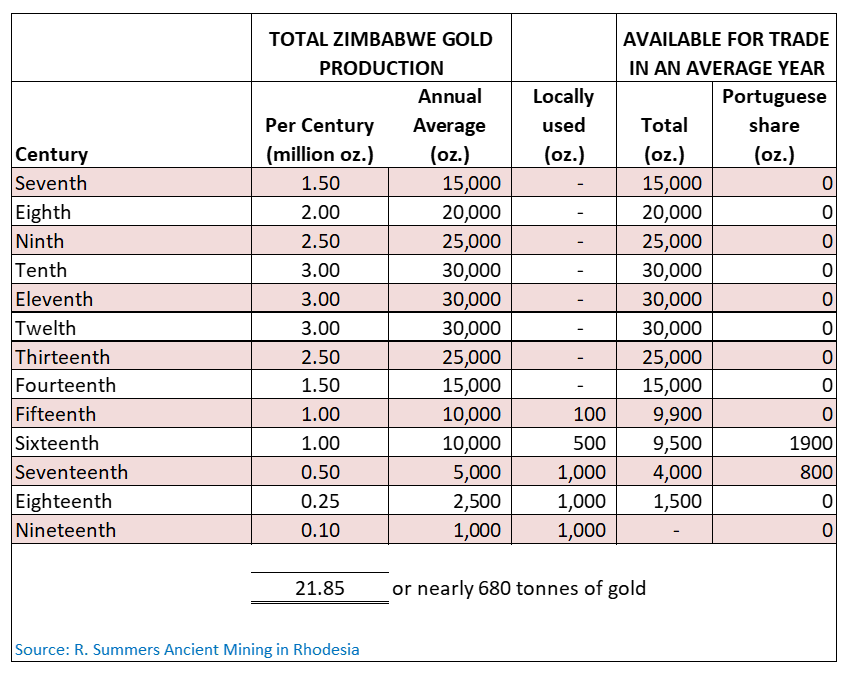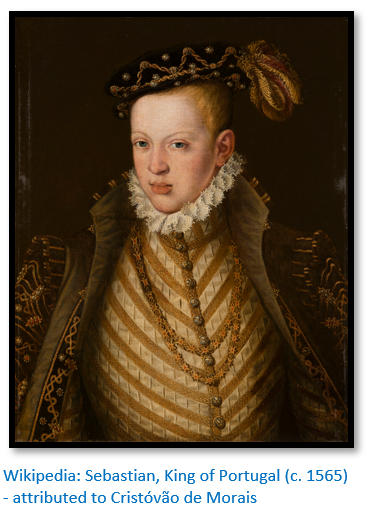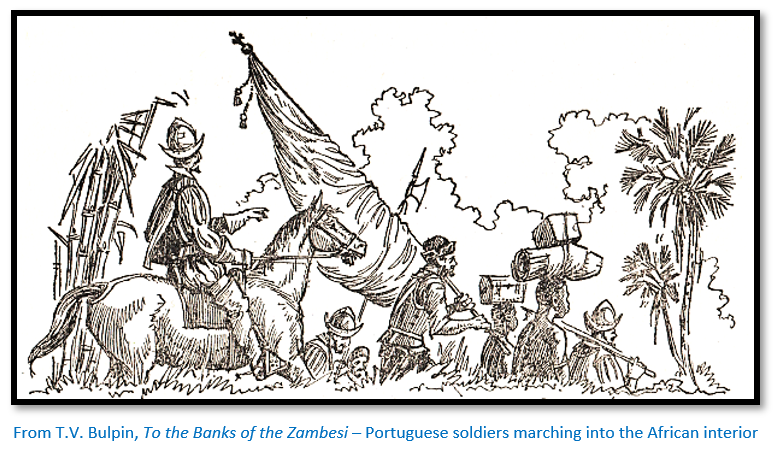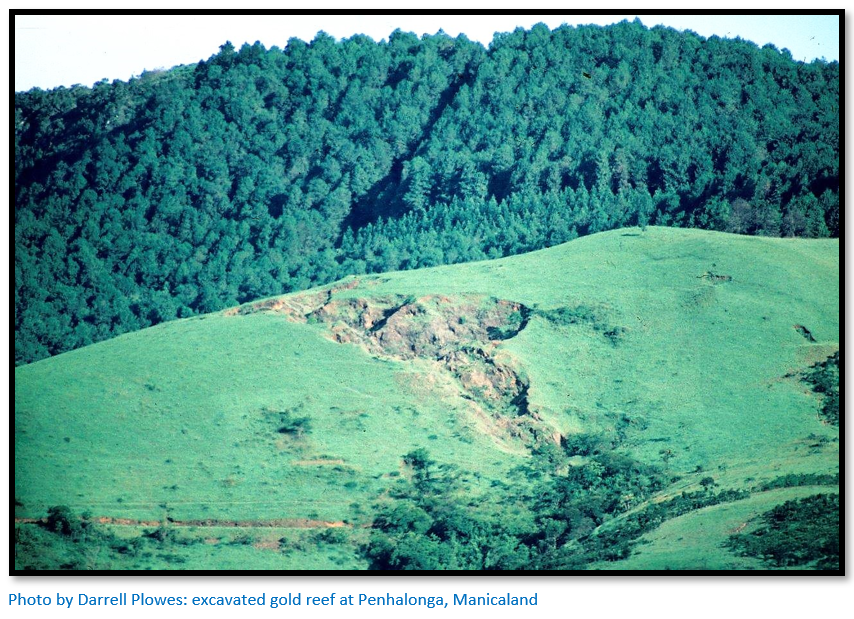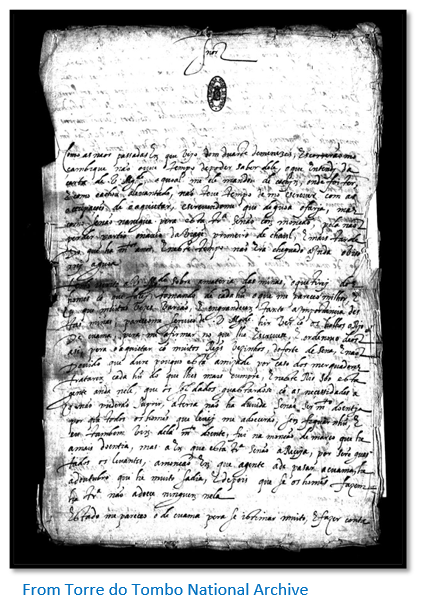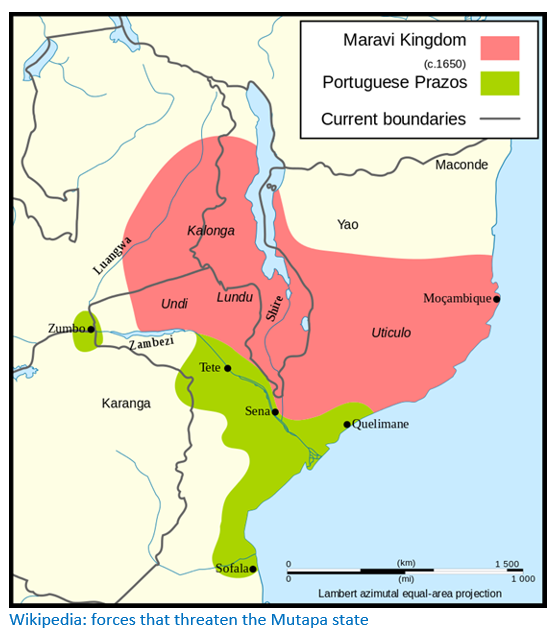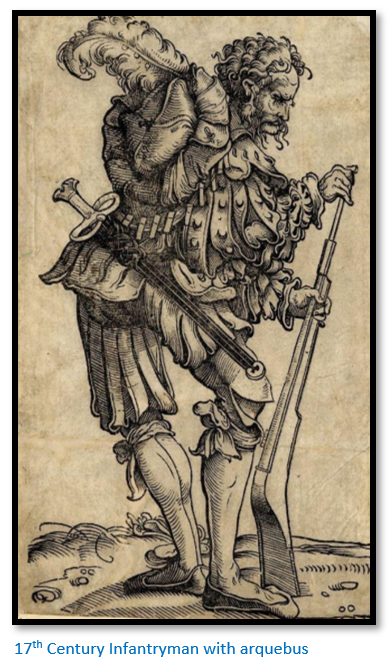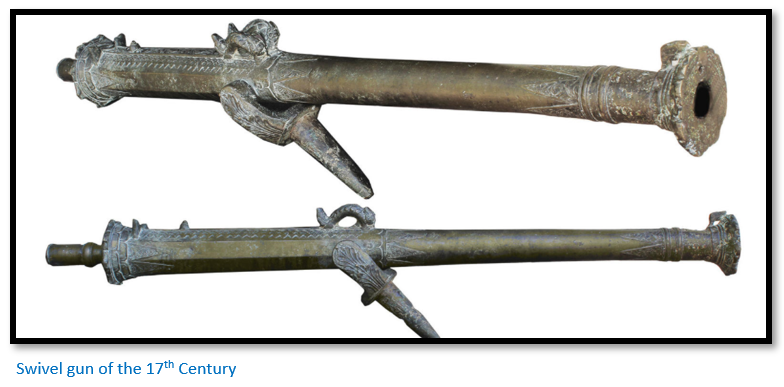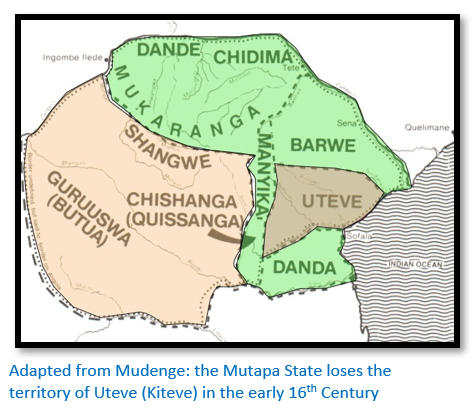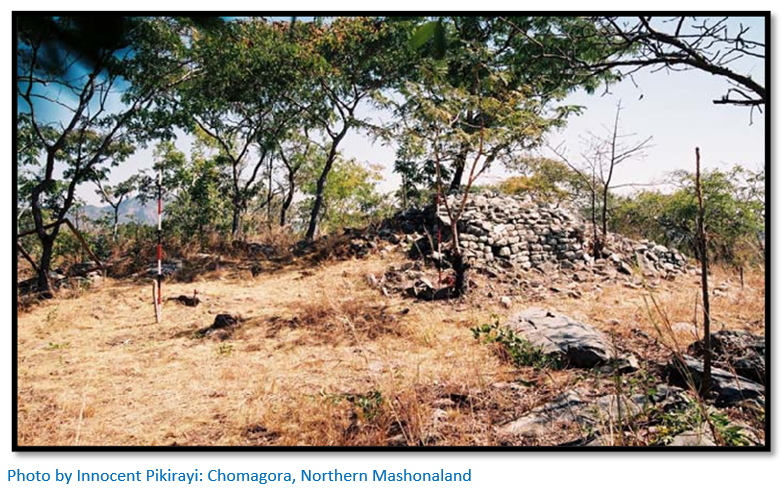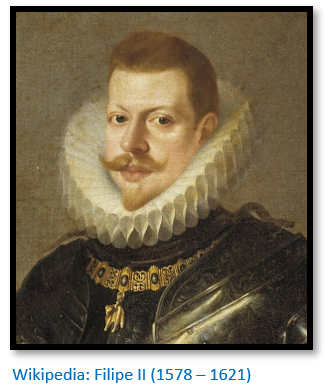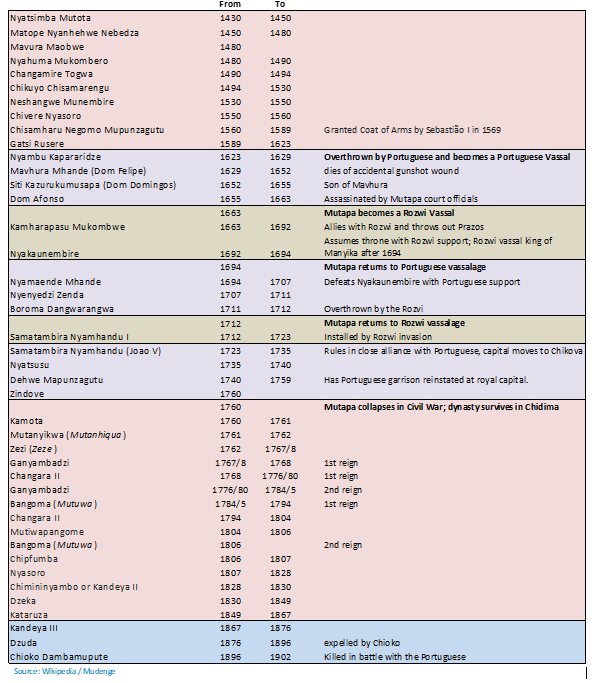Home >
Mashonaland Central >
The Mutapa (Mwenemutapa, Monomotapa) State in its heyday c.1480 – c.1623
The Mutapa (Mwenemutapa, Monomotapa) State in its heyday c.1480 – c.1623
Introduction
The article The Rise of the Mutapa State and the early arrival of the Portuguese c.1450 – c.1480 discussed the early emergence of the Mutapa State. Although the exact relationship between Great Zimbabwe and the Mutapa state is still unclear, it appears from the archaeological evidence that Great Zimbabwe’s dominance gradually waned in the 15th Century to competitor regions – Khami in the south-west, and Mutapa, in the north of present-day Zimbabwe.
Both Innocent Pikirayi and Gilbert Pwiti believe the movement of the Zimbabwe Culture to the Dande area in north-eastern Zimbabwe may well have involved just the ruling Karanga elite rather an exodus by the general population. The archaeological work by Pwiti also indicates that local populations in the Dande area were slowly and peacefully assimilated with the newcomers, rather than being conquered as asserted by some authors, including Abraham using rather shaky oral traditions.[i] Mudenge writes that peaceful assimilation is less dramatic, but more complex and probably more believable. Archaeological digs in the Zambesi Valley by Pwiti failed to disclose any evidence of conquest by military forces which would have revealed burnt villages and signs of a hurried departure by the vanquished.
Pwiti explains how the Zimbabwe Culture linked to Great Zimbabwe spread to the Mashonaland plateau of present-day north-eastern Zimbabwe in the form of dry-stone buildings, graphite-burnished pottery and spindle-whorls for spinning and weaving, weapons, agricultural tools and metal-working technology.
Clearly the northern plateau of Mashonaland had a fertile climate and soil for agriculture and cattle rearing and the greenstone belts were already known to be gold-bearing. Also the long-distance trade was gradually pivoting northwards from the coastal ports towards interior trade centres such Ingombe Ilede that were being accessed from Quelimane and the Zambesi river – the preferred route by the middle 16th Century.
The Mutapa state experienced constant flux throughout the 16 / 17th Centuries
Initially the Karanga rulers of the Mutapa state maintained their influence through marriage between powerful families, working together with the spirit mediums and gaining control over rain-making ceremonies. Elaborate court procedures helped bind senior advisers to the Mutapa, but a major weakness lay in the uncertainty of succession of rulers.
The Portuguese became increasingly active in the plateau of northern Mashonaland during the 17th Century and established a permanent presence at their feiras where they traded for gold and obtained land concessions from the Karanga rulers. Disputed succession within the Mutapa state allowed them to wield significant influence and support the candidates that were positively disposed towards them.
What do we mean by the Zimbabwe Culture?
Already described in the article on The rise of the Mutapa state and the early arrival of the Portuguese c.1450-c.1480 are the architectural dry-stone buildings of the Great Zimbabwe Culture that occur singly or in clusters on the northern Mashonaland plateau. Early examples described in the same article include Zvongombe, Nhunguza and Ruanga, to the east Tere (or Mutoko) and further south at Tsindi (formerly Lekkerwater) and Zvipadze (formerly Harleigh Farm)
They all represent provincial centres or courts of the elite rulers in the Great Zimbabwe Culture but as time went by the dry-stone walling of their capitals was replaced by pole and dhaka huts such as were surveyed by Innocent Pikirayi at Massapa or Baranda Farm close to Mt Darwin.
The new centres became market towns at which the Swahili and Portuguese traders and their vashambadzi conducted trade with the local communities. Baranda Farm close to the gold-mining areas of upper Mazowe river and Tafuna Hill expanded in size to over a kilometre wide during the 16 – 17th Centuries and served as a regional market place where imported glass beads, glassware and ceramics from Asia was traded for gold, ivory, and skins. No dry-stone walling was found, but plenty of graphite burnished pottery with a clear connection to the Zimbabwe Culture.[ii]
Adapted from Pwiti: Map of northern Zimbabwe showing the distribution of Zimbabwe Culture type sites (after Pikirayi, 1993) These appear in clusters which are associated with ruling dynasties. Nyatsimba Mutota’s capital is part of the Dande cluster, while the Zvongombe cluster has also been associated with Mutapa capitals.
The same article describes what Pikirayi identifies in his book The Zimbabwe Culture: Origins and Decline of Southern Zambezian States as its most distinguishing features:
- Dry-stone residences known as dzimbahwe’s and referred to as palaces by Main and Huffman with free-standing stone walls laid-out in systematic fashion
- Graphite burnished pottery
- Settlement patterns that separated the elite rulers from commoners.
Main and Huffman point out that Zimbabwe Culture encompasses far more than building construction and that it represented a new social phenomena that included:
- Class distinction between commoners and a new ruling elite that involved sacred leadership that included the ruler taking on the responsibility of rain control[iii]
- The ritual seclusion of the ruler is evident in the architectural layout of all the dzimbahwe and retained in the expression ‘the crocodile does not leave its pool’ a motif that is displayed in the symbolic patterns found in the dry-stone walling.
- The rulers duties included providing bounty from the earth – i.e. ensuring the food crops of sorghum and millet provided for the population and control of the rain – the African hoe on the Mutapa grant of arms given by Sebastian I acknowledges this royal duty. Also to provide justice and defend the people symbolised by the golden arrows that flank the hoe.
Pikirayi[iv] dates Zimbabwe Culture from the 11th to the late 19th Centuries and divides it up into three main cultural periods:
- Mapungubwe phase – which marks its earliest emergence from c. 1040 – 1270 in the dry mopane woodlands of the Shashe-Limpopo basin
- Great Zimbabwe phase – dating from c. 1270 – 1550 in the wetter Brachystegia-dominated miombo of the south-central Mashonaland highveld
- Decline of the Great Zimbabwe phase – which split into two regions:
(i)The northern plateau of Mashonaland south of the Zambesi river which evolved into the Mutapa state from c. 1450 – 1900
(ii)Torwa state based around Khami from c. 1450 – 1650, that was replaced by a Rozvi-Changamire state from c. 1680 – 1830
Main and Huffman in their book Palaces of Stone: Uncovering ancient southern African kingdoms further identify the elite ruler’s residence usually on the summit of a hill. Often this may previously have been a rain-making site and thus is known as a sacred place, before being appropriated by the ruler as a royal house.
Archaeological excavations have shown that for the first time the royal houses within the Zimbabwe Culture tradition were built on a platform built behind a stone retaining wall with even stone coursing and that the outline of the ruler’s dwelling: “was clearly designed to separate the leader from his family and followers, providing early evidence for ritual seclusion of a sacred leader.”[v]
Going on they explain that sacred leadership in an African context “refers to the mystical relationship between the leader, his ancestors, the land and God. The king would appeal to God, through his ancestors, to make it rain – to ensure the fertility of the land and of his people. Rainfall thus depended on the ruler’s relationship with God, and a ruler’s power was based in part on the claim that his ancestors could intercede directly with God. The position of sacred leader was thus not hereditary as people believed that the ancestors appointed, or at least approved, sacred leaders.”
The hierarchy of political levels (i.e. rank) in Zimbabwe Culture
Main and Huffman state that ethnographical research: “allows us to identify six political levels, correlated with settlement size, that functioned as ‘administrative nodes’ within a state – a scheme that applied to all Zimbabwe Culture areas.”[vi]
State capitals administered large areas up to 90,000 sq. kms which in turn were broken into smaller provincial capitals which in turn administered smaller settlements down to individual kraals. The status of each settlement was determined by its population size and economic importance, but the main centres are characterised by palaces with their dry-stone walling that were surrounded by the commoners homes who formed the backbone of the domestic economy based on agriculture (growing sorghum and millet) and pastoralism (raising herds of cattle and small stock)
Portuguese records and Shona ethnography provide the evidence that up to very recent times the administration of disputes between single homesteads to those between towns were settled at a men’s court. The judge or adjudicator in each level of dispute would be from the next higher hierarchal level.
Thus a dispute between members of a settlement would be judged by the Homestead Headman (Level 1) but a dispute between two homesteads would be judged by the Neighbourhood Headman (Level 2) between two different chiefdoms by a Senior Chief (level 4) with “each administrative level being the apex of a pyramid of lower courts.”
Each centre of importance would have a dry-stone building (stone palace) that housed the local leader who represented the Mutapa state’s authority.
Swahili traders from Angoche may have used the Zambesi valley prior to the Sofala route
The Swahili traders who came from the Angoche Sultanate may originally have traded for ivory and gold with the Tonga and Tavara people in the Zambesi valley from as early as the 10th Century and possibly used this route down to Great Zimbabwe instead of the traditional Sofala route even before the coming of the Portuguese.
The Karanga newcomers from Great Zimbabwe may have assimilated with the Tonga and Tavara through marriage and economic ties and gradually extended their cultural influence to dominate the indigenous groups which “marriage, kinship systems and economic ties reinforced and consolidated.”[viii]
Nyahuma Mukombero (1480 – 1490) expands the Mutapa state
The article The rise of the Mutapa State and the early arrival of the Portuguese established that Matope, son of Mutota, came to dominate the Tavara and Tonga people in the Dande, Chidima and Mutavara regions. The extent of his domination is unknown; it may be they simply sent gifts to acknowledge his role as either ally or master.
After Matope the state expanded to include Uteve and Manyika, but who actually was responsible for its expansion is unclear. The Wikipedia entry states: “the empire had reached its full extent by the year 1480 a mere 50 years following its creation.” However there is no evidence or explanations as to how this was achieved so remarkably quickly and the statement appears on shaky grounds.
Mudenge quotes Diogo de Alcacova who wrote in 1506, some years after the events, that Changamire Togwa (Torwa) as chief justice or a governor of Guruuswa (Butua) was much favoured by Nyahuma Mukombero and became so wealthy that the Mutapa became jealous and perhaps fearful of his growing influence.
The effective extent of the Mutapa state
However it is highly unlikely the Mutapa state ever wielded an effective rule over an area as indicated above. There were Karanga settlements as far south as Manyikeni dating from the 14th Century, close to the Swahili coastal port of Chibuene in the furthest south of Danda. In Botswana there are smaller Dzimbahwe built in the 15th Century near the goldfields of the Tati valley (Nkuke and Bluejacket) on the edge of Sowa (Sua) pan and on the eastern edge of the Makgadikgadi region (Toranju, Tlapana and Khama) Other Karanga settlements were established on the Mozambican coastal plain in the regions of Inhamior (Barue) Quiteve (Uteve) Sedanda (Danda) Chikanga, Manyika and Biri.
All these regions enjoyed the cohesion of sharing the Karanga language from their ruling elite who had migrated away from the centre and introduced their Zimbabwe Culture into the areas they now settled and ruled. Although they may have claimed their origins from the region named as Mukaranga above, that did not make them part of a unified and interconnected Mutapa state. What Pikirayi states in relation to the Great Zimbabwe state applies equally to the Mutapa state: “On the face of it, it is difficult to conceive that rulers based at Great Zimbabwe exerted much control over independent-minded local rulers on the Mozambican coast, some 300 kilometres away.”[ix] In relation to the eastern spread of the Zimbabwe Culture he writes: “It is also imaginable that prosperous Leopard’s Kopje chiefs, living in an environment well-endowed with good pasture for their cattle, with gold, copper and salt at hand, imitated the power and prestige of their successful eastern counterparts with whom they probably had commercial ties.”[x] The unsettled events in the centuries that followed proved how impossible this task proved to be.
Nyahuma Mukombero (1480 – 1490) continued
Mukombero offered the Changamire a trial by ordeal through a poisoned cup. Changamire refused the challenge and sent a reply to the Mutapa saying he would rather die fighting in war than by poison. Mukombero then sought a peaceful solution by sending cattle and gold but insisted Changamire drink the poisoned cup. Changamire decided to fight and entered Mukombero’s zimbabwe which had: “houses…which were of stone and clay and very large” where he killed Mukombero and 21 of his 22 sons and declared himself the new Mutapa. The eldest son, Chikuyo Chisamarengu, then 16 years old, managed to escape.
Changamire Togwa (1490 – 1494) Rozvi Secession from the Mutapa state c.1490
Changamire Togwa then ruled in peace for four years during which time he led the Rozvi secession of Guruuswa (Butua) from the Mutapa state. In 1494 he was killed by Chikuyo Chisamarengu in a battle said to have lasted three and a half days.
The territory of Guruuswa (Butua) with its capital centred around Khami would never again be part of the Mutapa state, if in fact, it ever was. The founders of the Torwa state may have had the same origins in c. 1450 as those of the Mutapa state and shared the same Zimbabwe Culture, but there is little historical evidence they were subjects of the Mutapa state. As Pikirayi succinctly puts it: “Breakaway tendencies on the periphery of centralized polities are commonly associated with the collapse of large territorial confederations (Tainter 1988) The basic proposition may be stated simply: feudal states lose effectiveness in direct relation to their territorial extent. Chiefdoms and customary states require constant flows of benefit. As the hegemony grows, those on the peripheries of the circulation of benefit feel left out. Their attention and their allegiances wander to ambitious individuals closer to home, who are in a position to fulfil the social contract.”[xi]
Chikuyo Chisamarengu (1494 – 1530)
Chikuyo re-established control over Barue, Uteve and Dande, but not Guruuswa (Butua) which was loyal to Changamire’s sons. The highlands of Manyika was then unconquered, but the intermittent warfare that continued between Chikuyo and the sons of Changamire resulted in a great decline in the gold trade with the coast.
Manyika was finally conquered by Chikanga, a son of Makombe, the ruler of Barue and loyal vassal of Chikuyo and from 1506 – 1515 the lands from the Indian Ocean coast to Manyika, Barue and Mukaranga in the west were at peace and the gold trade with Sofala re-established.
At the same time Sachiteve Bandahuma, an ally of Changamire became increasingly independent of Chikuyo and sent his son Nyamunda to conquer Madanda, or Danda which he ruled by the time of his father’s death in 1515. In that year João Vaz de Almada, the Captain at Sofala received an ambassador from: “a local lord whom they call Ynhamunda (Nyamunda) and who has risen against the king of Benemotapa (Munhumutapa) and who is a man feared by all the neighbourhood.” [xii] Nyamunda was described as ‘evil,’ a ‘cur’ and ‘very cruel and a tyrant…feared beyond belief.’
Nyamunda’s desire to conquer ‘all the lands around the rivers’ as far as Sofala and Manyika and his claims to the Mutapa throne brought him into conflict with Mutapa Chikuyo.
António da Silveira wrote that their struggle was: “for no other reason than to see who shall wed the fortress (Sofala) and have it on his side” because without the goods obtained from trade with Sofala, Chikuyo “cannot get men, or wage war against” Nyamunda. Mudenge writes that Nyamunda had been impressed by the way Portuguese cannons had beaten the Sofala Muslims and the attack on Angoche in 1511 and one of the first presents he asked for was a bombard. Very likely Nyamunda hoped to control Manyika and the route to the gold regions of northern Mashonaland and thus favour the Sofala-based Swahili at the expense of those from Angoche.
The Portuguese fail to grasp the internal politics of the interior and trade at Sofala declines
The Portuguese did everything they could to open a direct trade route with the Mutapa. In 1505 they received his envoys and exchanged presents.
In 1511-12 they sent Antonio Fernandes, a degradado, into the interior in a series of journeys to get information on the Mutapa state and its gold trading system. [See the article Antonio Fernandes, probably the first European traveller to Zimbabwe in 1511 – 12 under Mashonaland Central on the website www.zimfieldguide.com]
Although Nyamunda sent presents of gold to the Portuguese at Sofala, he became irritated when the Portuguese envoys sent to him fell sick and refused to acknowledge their presents which included one bombard and sent them back requesting four bombards and soldiers who could operate them.
When it appeared this would not happen, António da Silveira writes that he made certain the Portuguese did not know the routes into the interior and prevented them from trading by robbing and killing Chikuyo’s men who travelled to Sofala and confiscated their gold. The ban on trading gold even affected those coming from Butua who were not at war with him. It seems that Nyamunda’s real intention was to win over the Portuguese as allies in his fight with Chikuyo, when this did not happen, he lost interest in them.
By 1528 Nyamunda controlled access to Sofala which led Dom Lopo d ’Almeida to conclude that: “while Ynhamunda (Nyamunda) is alive, Your Highness cannot gain profit from Sofala” so long as the Portuguese continued to maintain contact with the Mutapa state.
Mudenge points out that historians have explained the decline of the Sofala trade as resulting from Portuguese inefficiency, or high-handed treatment of local people and even a plot by the Swahili traders to favour Angoche at the expense of Sofala. It appears that Nyamunda and his conflict with the Mutapa state may have caused this decline in the gold trade, but this was also reinforced by the Portuguese harassing the Muslims at Angoche.
Internal strife continues in the Mutapa state
In addition to his quarrels with Nyamunda on the coast and the rulers of Butua in the west, Mwene Chikuyo faced other revolts, including one from the captain-general of his army. Gaspar Veloso, the clerk at Sofala who wrote Antonio Fernandes reports in 1512 said: “the king of Butua (Guruuswa)…is as great as the king of Menomotapa and is always at war with him” and later that the king of Ynhoqua was then also at war with Chikuyo.
Neshangwe Munembire (1530 – 1550)
Mudenge writes that in Neshangwe Munembire’s reign (1530 – 1550) Nyamunda continued, as he has with Chikuyo, to frustrate the new Mutapa’s efforts to establish good relations with the Portuguese at Sofala and after supplying Nyamunda with arms and powder their neutrality must have appeared suspect, but finally Portuguese relations with the Mutapa state grew closer.[xiii]
In 1542 Mutapa Munembire sent an ambassador to Sofala saying that in the previous few years Uteve had been closed to them, but hostilities had come to an end. The ambassador asked if the Sofala captain would send his own ambassador to stay at Mutapa Munembire’s dzimbahwe as a sign of Portugal’s good faith and when this was done they would reopen the Sofala trade route. Ambassador Fernão de Proença was sent from Sofala, but very little more is known about his mission.
The Portuguese take control of the Zambesi valley from the Swahili traders at Angoche
Father Monclaro who accompanied Francisco Barreto claims Gaspar da Viega was the first Portuguese to use the route up the Zambesi river (called the Cuama on early maps) Between 1530 – 1540 they replaced Muslim bazaars along the river with settlements at Quelimane, Sena and Tete. Initially, Muslims were tolerated by the Portuguese, but in 1572 they were suspected of attempting to poison Francisco Barreto’s horses and men and expelled from the Portuguese settlements [See the article Francisco Barreto’s military expedition up the Zambesi river in 1569 to conquer the gold mines of Mwenemutapa (Monomotapa) under Mashonaland Central on the website www.zimfieldguide.com]
With the establishment of these settlements on the Zambesi river the Portuguese were much closer to the Mutapa state or Mwenemutapa (From the Shona: Mwene we Mutapa)
The Portuguese fight the Tonga in the Tete area
It appears the Mutapa did not rule the area east of the present-day Ruenya river as Fr. Monclaro writes that from about 1550 the Tonga, he calls them the Mongas or Samungazi, controlled a large territory along and south of the Zambesi river. The Tonga had originally been subjects of the Mutapa state, but successfully rebelled until defeated by Francisco Barreto in his 1572 military expedition. Mudenge calls this area Hondosaka which was a major trade route from the Zambesi river into the Mukaranga (northern Mashonaland)
The Portuguese control the Sofala and Angoche trade routes
With Sena and Tete firmly in their hands, control was firmly in Portuguese hands and even the Swahili traders used Portuguese ships to move their trade goods. The Portuguese captain at Mozambique Island had a monopoly of the lower Zambesi and his boats took the trade goods to Sofala and Sena where they were sold to the Portuguese and Swahili merchants at those places. In 1572 there were said to be 20 Portuguese coexisting happily with the Swahili. Monclaros wrote: ”all, Christians and Moors, went about so much mixed together as if they belonged to the same sect and as the Moors were not always evil, those to whom they wanted to give life, they did give it on account of the profit to be derived from the merchandise.”
Diogo Do Couto in Decadas da Asia writes of a : “village of friendly Moors” near Sena in 1571 where: “those Moors, owing to their intercourse with the Portuguese and whom they had, for the most part, grown up together, spoke and wrote our language well.”
Trade with the interior
At Sena Couto wrote the Portuguese merchants initially traded with both Swahili traders and indigenous natives and what was not sold here went to the feiras at Dambarare, Luanze (Ruhanje) Bukuto, Makaha, Massapa, Chipangura (Massikessi) and elsewhere. The merchants at Sena and Tete either travelled into the interior accompanied by as many as 100 – 200 African attendants (vashambadzi) or sent their trade goods with their attendants to the feiras. Couto wrote that: ”up til now not one (of the attendants) has been known to have played any mean trick on his master or have stayed behind in the backlands with his master’s property.”
Typically each, carried on his head a mutoro weighing two corjas, or nearly 25kgs of cloth. They also carried beads strung on macuti threads called mitis. At the feiras they had agents who traded on the merchants behalf. Most Portuguese merchants or their agents sold at the feiras: “at fixed dates.” Only Swahili merchants and African agents sold outside the feiras at inland markets or villages where they often gave goods on credit to the villagers: “and by thus trusting them they oblige them to dig (for gold), and they (the villagers) are so trustworthy that they keep their word.”
Cooperation is replaced by mistrust with the arrival of Dom Gonçalo da Silveira, S.J
There is much evidence that Christians, Muslims and African traders initially co-operated in their trading. However the arrival of Dom Gonçalo da Silveira, S.J. at the dzimbahwe of Chisamharu Negomo Mupunzagutu in late December 1570 ushered in a new era of fear and mistrust. Chisamharu Negomo was a young man of 16 years who had only become Mutapa the same year succeeding his father Chivere Nyasoro and was already being threatened by a pretender called Sachiteve Chipute, who no longer had a claim to be ruler, but saw an opportunity existed. He probably hoped his welcome to this muzungu Mhondoro / Nganga would be reciprocated with strong Portuguese support against his rival.
But Silveira belonged to the Society of Jesus, who saw themselves as soldiers of Christ and looked at the Muslims at Chisamharu Negomo’s court as enemies of the faith and was totally intolerant of their presence in striking contrast to the easy-going relationship of Muslims and Portuguese at the Tete and Sena settlements. Silveira’s mission was to convert the Mutapa and his followers who would then favour Portuguese traders and expel the Swahili traders.
Mudenge says the ultimate aim was for Christians (i.e. the Portuguese) to dominate trade in the Zambesi valley and Silveira was: “more or less a one-man army of invasion on behalf of Portugal and Rome.”[xiv] [The story of Silveira’s martyrdom on the banks of the Musengezi river on 15 March 1561 is told in the article The 1561 martyrdom of Dom Gonçalo da Silveira, S.J. under Mashonaland Central on the website www.zimfieldguide.com]
See the article Chisvingo Monument under Mashonaland Central on the website www.zimfieldguide.com
Consequences of the death of Dom Gonçalo da Silveira, S.J
The Mutapa, Chisamharu Negomo, soon realised that Silveira’s death on his orders would have consequences. Portuguese traders warned him the Portuguese would seek vengeance and he should expect God to punish him. He was remorseful and claimed he had been misled by the Swahili traders at his court who were threatened by Silveira’s influence. Two of the four were put to death, the others escaped.
Silveira’s death did not result in an immediate split between Portuguese and Swahili traders but Mudenge states that the gospel of Christianity: “challenged the Shona social and political structures” and threatened those at the Mutapa’s court, although at the time they checked the threat. But Francisco Barreto’s military expedition accompanied by additional missionaries resulted in Fr. Silveira’s influence in the Mutapa state being greater after his death than during his lifetime.
Fr. Silveira’s death used as a pretext for invasion
The Portuguese king Manuel I had requested a legal commission to investigate the murder of Fr. Silveira and whether it justified war on the Mutapa state. In 1509 the Mesa da Conscencia delivered its opinion which was that the king of Portugal might justly make war on Mutapa Negomo on the grounds that the chief had murdered Silveira, robbed Portuguese citizens of their property and allowed the Swahili Arabs to reside in Mashonaland.
Their conclusions: “having seen and examined these documents and reports of many persons, from which it is proved that the emperors of Monomotapa frequently command their innocent subjects to be killed or robbed and are guilty of many other wrongs and tyrannies for slight causes; and that they ordered several Portuguese, peaceably engaged in trading, to be killed and robbed, and that one of these emperors ordered the Father Dom Goncalo to be put to death,” was this warranted reprisal.[xv]
The effective extent of the Mutapa State
Often flatteringly referred to as an Empire, this definition implies a powerful sovereign or central government which appears absent in a detailed examination of the Mutapa state or confederacy.
Stan Mudenge states the territory extended initially in the fifteenth century stretched from the Indian Ocean along the Zambesi river as far west as the edge of the Kalahari desert and as far south as the Save and Limpopo rivers and east back to the coast as outlined in his earlier maps. This area of approximately 240,000 sq. miles (620,000 sq. kms) seems unfeasibly large for even a loose confederacy of vassalages and there is no evidence of any military conquest covering this entire area. A large and sophisticated network of political alliances would be necessary to hold a territory of this magnitude together and again there is no evidence to support its existence. Mudenge may have had his own political agenda for exaggerating the area of the Mutapa state much as the Portuguese scribes exaggerated its power and influence in the 16th / 17th Centuries to make their own reports more important.
Mudenge states that from the 15th Century the Mutapa state began to contract beginning with the loss of the richest province of Guruuswa (known as Butua to the Portuguese) and by the beginning of the 17th Century it had lost the important coastal province of Uteve (Quiteve) Portuguese descriptions of these eastern Karanga provinces particularly in Quiteve between the Pungwe and Buzi rivers and in Danda between the Buzi and Save rivers report the civil wars between them last into the late 1620’s.
Pikirayi writes the gold trade between the interior and the coast was particularly profitable before the Portuguese switched to using the Zambesi river and its interruption had a particularly adverse effect on the Mutapa state and its vassals in the interior.[xvi] However, the effects of Portuguese intervention in the 16th Century in the politics and economics of the Mutapa state do not appear to have been so significant.
By the mid-17th Century Barue and Manyika were gone as were the Mutiara (Madziva) rulers in Maungwe who were replaced by the Makoni dynasty. Between the 16 – 17th Centuries most of the south of the Zambesi east of Chidima were appropriated as prazos by the Portuguese.
In the last decade of the 17th Century most of the remaining Mutapa state was overrun by the Rozvi. In the first half of the 18th Century only Dande and parts of Chidima in the Zambesi valley remained, but in the second half even Dande was lost, so that only Chidima, south of the Zambesi and around Tete remained.
The Mutapa state needs to be viewed as ever-changing and Mudenge makes the point that many of the generalisations that are made may be valid in one century, but invalid in the next. For example, it may be valid to state that in the 15th Century it was an empire, by the early sixteenth century it is probably more accurate to call it a paramountcy (i.e. a supreme power or authority) held together by a system of vassalage and reduced to a chiefdom by the late nineteenth century.
Historians need to be sceptical of many Portuguese reports to the king of Portugal that are often exaggerated; the Jesuit Fathers needed to emphasise the rich commercial prospects of the Mutapa State as large amounts of resources in supplies and men were being invested by the Kingdom of Portugal that was anticipating the venture being a commercial success.
It is more probable that the area of effective control of the Mutapa state is much smaller than the old declarations of a vast “empire.” The boundaries appear to have run from the Tsatse River, north of Concession down to the Mazoe, then down the Mazoe-Ruenya to the Zambezi River in the east. In the west from the Zambesi to the Manyame (Hunyani) Dande and Shinje rivers, then along the Umvukwes / Mvurwi range of mountains to the Tsatse River’s source.
The Mutapa state was probably centered on the Mashonaland plateau and a wide area of the Zambesi valley lowlands. The plateau segment would be most important economically because most of it received more than 30 inches (76 cms) of rain per year, much more than the dry Zambesi valley and, on the whole, the soils are more fertile.
The Mutapa capital
The Mutapa’s court was called dzimbahwe (Portuguese zimbaoe) meaning ‘large house of stone.’ In the 15th and early 16th Centuries the Mutapa may have surrounded their courts in stone, but subsequently they are built of pole and dhaka (mud) with grass thatched roofs. The capitals were not at one fixed place; each Mutapa was free to choose a new location and often this might be dictated by a loss of grazing or absence of firewood at the old location. So although the socio-political culture of Great Zimbabwe continued with the ruler secluded from the common people, the elite dry-stone walled enclosures disappeared and were replaced by large villages made from local materials. Joao dos Santos noted: “....even the king's palaces are built of wood covered with clay and thatched with grass.”
For example, Nyatsimba Mutota established his court on the western bank of the Utete River, a tributary of the Musengezi river, near a hill called Chitako-Changonya where he is believed to be buried.
However, his successor Matope Nyanhehwe Nebedza moved his court from the Utete to the Biri River, on the other side of the present-day Mozambique border, perhaps because it was more territorially central.
In time as its territory grew the Mutapa capital very likely moved to a more central location on the northern Mashonaland plateau and may have been situated at or near the Zvongombe complex in the upper Ruya valley. Several sites may have been used at different times by the Mutapas and as the best agricultural land, as well as many gold fields are situated within this area and references from Portuguese accounts indicate until at least the 18th Century the Mutapa capital was in the area of the upper Ruya and Mazowe valleys at Massapa feira / Baranda Farm.
Pikirayi believes the demands of the Mutapa courts for food, firewood and land: “placed excessive demands on the productivity of the savannah environments, leading to the abandonment of more than one court and resettlement in another area.” However the process of the court moving created social stress which in turn: “created shifts in the centres of political power.”[xvii] The court system required demands for labour with the rulers being rewarded with gifts and benefits, but as a court left for more fertile territory, the abandoned group lost the source of their wealth.
Early Portuguese Accounts from the early 16th Century describe the Mutapa’s buildings of Stone
Much research has been based on Portuguese written records dating from 1506 C.E.
In 1506, a Portuguese clerk based at Sofala on the coast of Mozambique wrote a letter mentioning a city "...called Zimbany...which is big and where the king always lives ....”He mentions the houses of the king were "of stone and clay and very large and on one level..." (Theal 1898-1903 vol. 1, pp. 62-8)
Portuguese Gaspar Veloso, about the journeys made by António Fernandes into the Zimbabwe plateau interior where kings always resided in royal places "... made of stone without mortar..." (Silva Rego and Baxter 1962-1975 vol. 3, p. 183)
Duarte Barbosa mentions the town of ‘Benametapa’ as the usual residence of the king, who lived “...in a very large place, whence the merchants take to Sofala gold which they give to the Moors without weighing for coloured cloths and beads which among them are most valued..." (Theal 1898-1903 vol. 1, pp. 95-6).
They describe the capitals of the Mambo’s as “…of stone and clay and very large….” or composed of “…many houses of wood and straw.”
In one of the towns, the residence of the king is described as “…a very large place, whence the merchants take to Sofala gold which they give to the Moors without weighing for coloured cloths and beads which among them are most valued…” (Theal, 1898-1903, vol. 1, 95-6)
From the reign of Neshangwe Munembire (1530 – 1550) the Mutapa’s palaces were not built of stone
Innocent Pikirayi[xviii] states that in the 16th Century Mutapa royal palaces were no longer constructed using stone. The custom of dry-stone building in the tradition of Great Zimbabwe ceased and even when Silveira met the newly installed sixteen year old Mambo Chisamharu Negomo as his kraal on the upper Musengezi river in December 1560 they were living in a kraal of pole and dhaka huts and no mention is made by the Portuguese writers of stone-walled palaces. [See the article The 1561 martyrdom of Dom Gonçalo da Silveira, S.J. under Mashonaland Central on the website www.zimfieldguide.com]
Even later, Joao dos Santos, who worked as a missionary in Tete in the Zambezi valley from 1585 to 1595, and whose account is mostly borrowed from earlier Swahili traders, is also clear that royal palaces were no longer built in stone. He noted instead that “....even the king's palaces are built of wood covered with clay and thatched with grass” (Theal 1898-1903 vol. 7, p. 275)
Antonio Bocarro who continued the ‘Decades of Asia' begun by Joao de Barros and Diogo do Couto adds: "The dwelling in which the Monomotapa resides is very large and is composed of many houses surrounded by a great wooden fence, within which there are three dwellings, one for his own person, one for the queen, and another for his servants who wait upon him within doors. There are three doors opening upon a great courtyard, one for the service of the queen, beyond which no man may pass, but only women, another for his kitchen, only entered by his cooks." (Theal 1898-1903 vol. 3, pp. 356-7)
Pirikayi confirms this trend of “State residences in the Mutapa state built using well-coursed stone gradually became smaller, although non stone-walled towns continued to grow in size…Stone walling survived in this and much of northern Zimbabwe in the form of fortified settlements and these cannot be described as urban.”[xix]
Pikirayi names Baranda Farm, close to, or at, the Portuguese feira of Massapa, 8 kms east of present-day Mt Darwin (or Mt Fura) in northern Mashonaland as a good example.[xx] Archaeological excavations have revealed that the building site covers around 15 hectares, although commercial activities may have covered a much larger area, and the dwellings are exclusively pole and dhaka huts. Baranda Farm / Massapa was sited close to the gold-mining areas of the Mazowe River, Tafuna Hill and Ruya river.[xxi]
Here developed a thriving gold and ivory trade between initially Swahili Arabs from the 10th Century with the coastal cities of East Africa and the Persian Gulf and India. The Jesuit fathers were extremely antagonistic towards the Muslim religion and the killing of the Portuguese priest Father Goncalo da Silveira in 1561 fuelled Portuguese demands for the expulsion of all Moors from the Mutapa’s court.[xxii] [See the article Francisco Barreto’s military expedition up the Zambesi river in 1569 to conquer the gold mines of Mwenemutapa (Monomotapa) under Mashonaland Central on the website www.zimfieldguide.com]
In the 16th and 17th Centuries the trade came to be dominated by the Portuguese. Gold primarily, but ivory and hides (especially leopard) were also exchanged for cotton goods, glass beads and Chinese and other ceramics including stoneware, earthernware and porcelain from Asia and Europe.
Pikirayi’s surveys found imported glass beads, Persian and Far Eastern ceramics and glassware. Also much locally produced pottery from the last phase of the Great Zimbabwe occupation suggesting this was a Zimbabwe Culture community engaged with trade with the Indian Ocean.[xxiii] So important was this trading centre that the Portuguese appointed a permanent resident as the Captain of the Gates who supervised the traders living in Mukaranga and acted as the Portuguese ambassador.
The increasing importance of the trade network becomes the reason for the Mutapa capital moving from north to south of the Zambesi escarpment.
Pikirayi believes that Baranda Farm/ Massapa: “could also be a Mutapa capital, as the same written accounts also mention the existence of such a centre there before moving northwards across the Ruya River.”[xxiv]
Prior to the development of a formal trade network Pikirayi believes the trade in gold was carried out within the physical area of the royal courts. When the Portuguese ousted the Swahili Arab network and established a permanent and semi-permanent presence at their feiras the gold markets sometimes became an extension of the royal settlements, Baranda Farm / Massapa feira being such an example.
The establishment of gold markets that became designated trading centres meant that the royal palaces also gravitated to them so that the Mutapa’s could regulate and control the prices of commodities such as gold and cotton goods.
However, feiras become centres of regional power on the plateau of northern Mashonaland
Pikirayi believes the feiras were located in close proximity to the goldfields, but also that the: “regional location of the trading centres, particularly those in the eastern half of northern Zimbabwe, shows some regularity in terms of spacing.”
He believes that with trade being dominated by the Portuguese from the late 16th Century to the 17th Century their feiras became: “competing centres of economic and to some extent, political power” and this: “… challenged the traditional social formation in the region, that which controlled access to productive resources and specific territory and depended on agricultural production to support the subsistence needs of local population.” Agriculture was to some extent sacrificed in favour of gold as trading gold was a better potential source of wealth.
Long-term intentions of the Portuguese
From the beginning when the Portuguese started their Fort Sao Caetano at Sofala in 1505 their motivation was about trade and their intentions towards the Mutapa state were clear. They sought to conquer the Mutapa state and own the gold mines and dominate the ivory trade. They had seen the wealth that gold and silver had brought to the Spanish from their mines in Latin America and in order to dominate the spices trade of the east, they needed to offer gold bullion.
Initially they believed they could oust the Sofala merchants and dominate the gold and ivory trade, but when this proved problematic with the supply routes from Manyika being disrupted by unmanageable vassals and the Swahili traders easily outmaneuvered them and began using other routes from Quelimane and Angoche, they sought to penetrate the northern Mashonaland plateau themselves and conduct the gold trade at their feiras.
The martyrdom of Silveira in March 1561 and Portuguese understanding of the close relationship between politics and religion in the Mutapa state provided a useful justification for an invasion of the Mutapa state, but their early efforts were frustrated by:
- Francisco Barreto’s military expedition of 1569 being thwarted by the Tonga (Samungazi) resisting his advance on the Mazowe / Ruenya rivers and then disease and supply shortages forcing the force to return to Sena in 1572 without ever penetrating the Mutapa state
- Although the Portuguese had small trading settlements at Sena and Tete the Zambesi valley formed a formidable natural barrier which was difficult and dangerous for non-indigenous people to cross
- The Mutapa’s ambassadors possessed formidable negotiating skills and managed to fend off and mislead the Portuguese with largely empty promises for a considerable period of time.
Chivere Nyasoro (1550 – 1560) the Mutapa political / economic system is weakened by the Portuguese presence
Pikirayi believes the entire Mutapa political system was undermined by Portuguese interference and intriguing. In addition, the Mutapa monopoly on potential sources of wealth loosened as the trade network became more widespread with other chiefs and headmen participating in trade for their own benefit rather than the ruling elite’s benefit. The accumulation of individual wealth from gold trading: “in the region transformed Mutapa society and political power.”
Innocent Pikirayi adds that the effect of gold-mining: “was to exert excessive demands on the local population, which had to mine more gold, we are told, thereby investing more time in the activity at the expense of agriculture. This shift in productive and accumulation patterns also undermined the Mutapa political system as it meant reduced tributary inflows to the royal palaces.”[xxv]
There is little doubt that the civil wars and disputes with vassal states were precipitated and hastened by the arrival of the Portuguese who constantly interfered with the succession process within the Mutapa state. This weakening of the central power in the Mutapa state prepared the way for the Rozvi invasions when they saw an opportunity to overcome their rivals.
Succession disputes further weakened the Mutapa state
Local Budya people believe this settlement was built by Makate and his people in the 16th Century. Makate was said to be a powerful magic worker who used his charms to defeat his enemies. Another chief from the Zambesi valley, Nehoreka coveted this area, but was defeated. Nehoreka used his sister to spy on Makate and steal his charms. Without his charms Makate was easily defeated and withdrew into a nearby mountain Ruware RwaMakate where a hoe became stuck in the tunnel mouth into which they disappeared. Local people call the monument Tere RaMakate (Makate’s former stronghold)
Dr H.A. Wieschoff carried out the earliest scientific excavation as a member of the Frobenius expedition in 1929, but his report is brief and apparently he did a considerable amount of damage to the walling. He found some gold foil and a gold amulet, Chinese celadon ware, perhaps the result of trading with the Portuguese at Luanze. The same imported ware, from the fourteenth century, has been found at Great Zimbabwe. Also iron arrowheads and knives, copper bracelets and wound copper wire and graphite-burnished pottery, all of which is exhibited at the Interpretive Centre on site. [See the article Mutoko (or Tere) Monument under Mashonaland East on the website www.zimfieldguide.com]
Oral history relates that when a Mutapa died a natural death one of his chief ministers, the Nevinga, immediately took over as regent for three days, or until a successor was chosen, after which the Nevinga was expected to commit suicide.[xxvi]
Then wrapped in a cow-hide the dead Mutapa was placed on a wood trestle table in an airtight hut sealed with mud. They were called masanzas by the Portuguese who wrote: “thus hanging all the humidity of their bodies falls into vases placed underneath and when all has dropped from them and they shrink and dry up…[they are] to be taken down and buried, and with the fat and moisture in the vases, they say he [the succeeding Mutapa] makes ointments from which he anoints himself in order to enjoy long life…and also to be proof against receiving harm from sorcerers. Others say that with this moisture he makes charms.”[xxvii]
The chief wife and others lived in the area as guardians until their death when successors would be appointed. The future mhondoro (spirit medium) would also come to live at the masanza and might take the wives of the dead Mutapa as his wives.
Parallel to these rites, a successor would be identified. Dos Santos in Ethiopia Oriental states: “the prince who succeeds to the throne is generally one of the eldest sons of the former king and his chief wives who are legitimate, and when they have not sufficient prudence to govern, the second or third son succeeds.”
However, Mudenge states that the Portuguese were aware that male sons were not always chosen and that oral tradition states that one brother succeeded another until they all had succeeded and then succession reverts to the son of the first brother in the previous generation.[xxviii] In fact, he states that of the 46 Mutapa successions, there were probably only 6 father-son successions.
Chisamharu Negomo Mupunzagutu (1560 – 1589)
Chivere Nyasoro (1550 – 1560) was succeeded by his son Chisamharu Negomo Mupunzagutu (1560 – 1589) which was specially negotiated as he was not the eldest son. Then Gatsi Rusere (1589 – 1623) was succeeded by his son Nyambo Kapararidze (1623 – 1629) but only after his uncle Mavhura Mhande claimed to be the Mutapa which led to civil strife and Portuguese intervention. Mavura Mhande (1629 – 1652) then became the Mutapa and was succeeded by his son Siti Kazurukamusapa (1652 – 1663) Between 1692 to 1902, there is probably only one case of a son succeeding his father – Kandeya III succeeded his father Kataruza in 1868.
Very often the succession was determined by force or by powerful allies – the Portuguese or later the Rozvi rulers. This became a major weakness for the Mutapa state and succession wars probably contributed more than any other factor to its downfall.
Royal regalia
Portuguese sources claim: “The said king [Mutapa] uses two insignia, one being a small hoe with an ivory point [handle] which he always wears in his girdle to show his subjects that they should cultivate and profit by the land, so that they may live in peace on what they obtain from it, without taking another’s property; the other consists of two assegai’s, showing that with one the king administers justice and with the other defends his people.”[xxix]
The Mutapa’s chief ministers / officers
Routine matters of state at court were dealt with by the Council (Dare) made up of the immediate advisers of the Mutapa, personally chosen on his succession, either members from specified families where demanded by custom, or on account of merit or friendship. These might include:
Nengomasha – governor of the provinces
Mukomohasha – captain-general of the armies
Ambuya – chief major-domo / steward
Nyandovo – chief musician
Nyarukawo – captain of the advance guard in war
Mbokorume – the Mutapa’s right-hand man
Nehonho – chief door-keeper
Mangwende – chief wizard (Nganga)
Netambe – the Mutapa’s herbalist
Nengomasha
In the 16th – 17th Centuries the Nengomasha appears to have been the first minister at court, but in later periods they seem to have lost their rank as the second most powerful notable in the state and the role remained prestigious but confined to a ritualistic role of guardian of the royal graves. Their former function was divided between two persons, the Nevanje or successor to the ruling Mutapa and the Nevinga, or chief minister. The Nevanje could be a brother, a son or a brother’s son of the ruling Mutapa and the post of Nevinga seems to have disappeared in the 19th Century.
Mukomohasha and Nyarukawo
The Mukomohasha is described as captain of the armies of the Mutapa, but in the 16th Century was also known as the ‘general and captain of the gates of the Kingdom.’ This was because Hondosaka in the east was the outer province which anyone coming from Tete had to pass through first before entering the inner parts of the state, in effect a border province. Later the Portuguese trader in charge of the feira at Massapa would be given the honorary title of ‘captain of the gates.’
Rezende in the Estado da India wrote: “this emperor {Mutapa) is in the habit of appointing a captain-general who is the second person, after himself, and he's called Macomoana (Mukomohasha) to reside in the lands of Botonga, at a place called Condessaca (Hondosaka)…the negroes of these parts…publicly assisted Caprasine (Kapararidze) in his wars.”
Mufenge states that the Mutapa state did not have a standing army so during peacetime the chief function of the Mukomohasha and Nyarukawo was to advise the Mutapa on military affairs.
Ambuya
The third office was that of chief steward and it was his duty to name the chief wife of the Mutapa known as Mazvarira (Mazarire)
In the 18th Century the chief steward was known as Nenzou (owner or keeper of the elephants) It was his duty to receive all the presents brought to the court, he was also in charge of the fazenda (trade goods) i.e. cloth and beads used as salaries for the Portuguese garrison at the Mutapa court which was paid by the Portuguese. The Nenzou was in charge of the Mutapa’s ivory and acted as the royal treasurer in charge of court finances.
Nyandovo and Nehonho
These two important posts were held by different persons. The chief musician was in charge of a large troupe of court musicians. The chief doorkeeper had keepers of the gates who were part of his usual entourage. Nobody could see the Mutapa without passing through the gates and explaining their business to the doorkeepers.
Mbokorume
Often the son-in-law or brother-in-law of the Mutapa and as his right-hand man a position of great confidence with absolute loyalty expected.
Mangwende and Netambe
These religico-magico roles were always represented at court with the Mangwende as the chief Nganga or diviner. Netambe was the chief herbalist and keeper of the royal spells and unguents and took a major role in the burial rites of dead Mutapas. Many of the persons originally filling these roles came from the Tonga / Sena area in the Zambesi valley until the Mutapa state moved east into Chidima where there was a stronger Tavara influence.
Mudenge asks whether each of the above officials who were all titled ‘kings’ in the 17th Century resided at court, or in their kingdoms? Antonio Bocarro describes their kingdoms and goes on to say: “Besides all these there is also a larger and principal kingdom, which is that of Mokaranga, where the Monomotapa resides with his court and most of these lords or their sons, of whom the Monomotapa makes use” so it appears they were resident at the Mutapa’s court as he goes on to say that when the Mutapa yawned, sighed, coughed or spat the officials would praise him saying: “thou art the lion, the leopard, the elephant, thou the invincible one, the mighty one, the immortal one” and clapped their hands.
Mudenge also discusses in detail the Mutapa’s other followers including bodyguards, musicians, dancers and jesters, pages, valets and cooks, and the royal wives (P99 – 110) which I have omitted.
Fr. Monclaro’s description of the system of rulers
Although, I have already said something of this barbarous people, I think it well to devote a chapter in itself to their customs and principal affairs, according to what I have seen myself or learned upon trustworthy information. The greater part of this Kaffraria is governed by fumos and petty rulers, and though it has powerful kings whom it obeys, it has nevertheless these fumos and headmen by whom the people are governed.
The fumos near Sena are Kaffirs, natives of the country, and very often the lowest are elected to this dignity. Most of them are forced against their will to accept the office, for when one has cows, millet, or naqueny which he can give them and spend, they elect him fumo, and his dignity lasts as long as he has anything to spend. When they have eaten up his property, they cast him out of the office, and pre-eminence is the most that they give him.
When an outsider has to speak to these fumos, he can only do so through others, and the word is passed through three or four before it reaches the fumo, even though he understands it. All are on mats in his presence, and he alone is seated on a quite which is a sort of small three-legged stool, and before they speak to him they clap their hands a little. They have great ceremonies among themselves, and no council is held without the fumo, who is often kept rather for ceremony than for any substantial obedience shown to him. The sons of these fumos are held in honour among them, though few care for a dignity which entails such loss, but they are forced to take it by those who bestow it on them.
Father Manuel Barretto noted that the Mutapa state had wards (matunhu) with: “their own names and limits, which are called moganos, and these territories... had their own fumos or petty kaffir kings.” So even in the 16th Century wards were divided into clearly marked villages each under a village head.
Vassal States
It is clear from Portuguese accounts that in the Mutapa state some territory was under the direct control of the Mutapa himself, but much territory was under the control of sub-rulers who enjoyed a considerable degree of autonomy but were obliged to pay annual tribute to the Mutapa ruler in the form of cattle, gold, iron and copper as an expression of political loyalty. In the same way some sub-rulers under the Mutapa himself were obliged to visit the court and pay homage; other sub-rulers were within the state structure but had more sovereignty and did not visit the court. Vassal rulers who defaulted risked severe penalties, for example, being forced to drink poison as a test of their loyalty.
Oral tradition and contemporary Portuguese accounts name the more important territories as the Lower Zambezi Tonga country, Barue (Inhamior) Manyika, Uteve (Quiteve) and Dande (Sedanda) Chikanga and Biri were at various times vassal states of the Mutapa. Mutapa rulers as well as the Portuguese accounts naturally tended to exaggerate both the power and the boundaries of the Mutapa state. For example, sovereignty is frequently claimed over the Torwa state (Butua) in the southwest of the plateau, but this seems unlikely because of the distances and that no conflict is reported between them in the late 15th / early 16th Centuries.
Over these is the Monomotapa, who is like a king, both in the obedience rendered to him and in the mode of succession, because his eldest son inherits. He is very powerful and has many leagues of territory and kings and great lords for his vassals. Of these, one is the fumo Pango, who also governs as a king, and they say that he can bring more than seventy thousand men into the field.
He has also for vassal the king of Butoa, where they say there is a great quantity of gold, and his territory is situated in the direction of the Cape. Many cattle come to us from this kingdom, and it is said that they are very plentiful there.
The king of Manyika is also his vassal. He is less powerful in land, his kingdom extending only twenty or thirty leagues. It is full of mountain ranges, and therefore very strong and difficult of conquest, even by the forces of the Monomotapa. They say that it contains much gold and when the country is at peace the Portuguese go and trade there, both from Sofala and from Sena. There is a great scarcity of provisions in the country. The Kaffirs there make much use of poison: the king is half a Moor and half a wizard, and they have learned its use from those wicked people.
The Mongazes are also vassals of the Monomotapa and pay tribute to him. There are also many other lords in the interior who are subject to him, of whom I had no special information.
Religion
Mudenge quotes Alpers: “the key integrative factor in the Shona political system was religion. As Mambo, the Mwene Mutapa was the ultimate religious authority in his kingdom, for he alone could communicate with the spirits of his ancestors.”
Damião de Goes who wrote Gloriosa Memoria in the 16th Century states the Shona: “do not make or worship idols, but believe in one God, the creator of all things, whom they adore and to whom they pray.”
But Fr. Monclaro states the Shona were: “lacking all manner of worship and knowledge of God” but concedes later: “some give to God the name of Mulungo, but all this in much confusion, darkness and obscurity.”
Later his clear prejudices are evident: “These are the customs of the Kaffirs. Their sorceries are many, and of many kinds, by which the devil deceives them, and if they have any form of worship it is rendered to the devil by these spells. These people are very unfit for baptism, and even those who are brought up amongst us and made Christians leave us every day and return to their own people, for they value their own customs very highly; and, as I have said, they easily turn Christian and easily leave Christianity, because they do not understand the meaning of it.”
In the 17th Century Manuel Faria e Sousa claimed the Shona: “have no religion, nor idols, but acknowledge one only God. They believe their kings go to heaven and call them Muzimos and call upon them in time of need as we on the saints.” Bocarro repeats much the same: “they know that there is a God in heaven. They believe that their kings go to heaven and when they are there they call them Muzimos and ask them for whatever they require.”
In the 18th Century the Descripção do Império Monomotapa recorded: “the emperor and all the other people of the empire have the knowledge that there is one God to whom they give the name of Muzimo [Mudzimu] but they neither called them by name nor do they call on him in times of need and affliction. They worship all their dead emperors and it is these who are their Gods, some with more reverence than others.”
Mudenge states two elements of Shona religion stand out, the first being a belief in one God; the second is the veneration of ancestral spirits, or Mudzimu.[xxx] The Portuguese writers say more on ancestor veneration when they describe royal Mhondoro cults. Pachero says the first Mutapa Mhondoro was Matope, known by the name Nebedza who announced before he died that his spirit was immortal and after his death it would enter a lion or Mhondoro to enable him to work among and guide his people forever. Portuguese writers confirm Nebedza was the most senior of all the royal Mutapa Mhondoro.
Mudenge writes in detail about the royal Mutapa mhondoro cult and the Dzivaguru-Karuva cults that are not two separate religions, but separate ways for the Shona to approach God. The royal Mhondoro were particularly important within the Mutapa royal lineage and their Korekore (Karanga) followers while the Dzivaguru-Karuva cult is associated with the Tavara / Tonga who come from the north-east of present-day Zimbabwe.
Religion was an important factor revolving around the ritual consultation of spirits and royal ancestors who were consulted at shrines through spirit mediums, but it was by no means the only reason for welding the Mutapa state together. The spirit mediums also helped preserve the oral history by remembering the names and deeds of past Mutapas.
Military Forces
The Mutapa state survived in one form or another for about 500 years threatened by the Maravi peoples, as well as Portuguese prazo-holders and the breakaway kingdoms of Uteve (Quiteve) and Guruuswa, (Butua) so they had forces at their disposal, but the various figures quoted are contradictory and confusing.
The Mutapa state never had a standing army throughout the history of the state. The army came from the peasant farmers who volunteered whenever there was an emergency, but before declaring war the Mutapa convened a council of war (Dare reHondo) and messengers would be sent to the districts to summon the council members.
After the decision had been made to go to war, the Mutapa would appoint a relative to accompany the Mukomohasha and Nyarukawo as his representative. An announcement of a declaration of war was done by beating the war drums as in every chiefs’ district there was a special drum beaten to summon the people, sometimes a horn was blown, or a gun fired. Criers would be sent to tell the people to assemble.
The forces would be assembled in regiments from 200 – 1,000 strong and each under a field commander. Fr. Monclaro says each regiment had its own banner / badge representing various figures like oxen, elephants and other beasts, all being big and made of straw and covered with cloth: “by these badges are known their captains and rulers with their men in war.”
Fr. Monclaro says that in battle they favoured fighting in an open field, used no ambushes: “nor did they resort to cunningly hidden snares, or attack by night, but rather at dawn.” First they sent out scouts marimbirimbi, for reconnaissance work. The remaining forces were divided into the murumo, literally the mouth, which was made up of the two flanks or ‘horns’ of the vanguard whose role was to envelop the enemy. The main body of fighters were the guru (guro) literally the ‘big one.’
Their weapons were mainly bows and arrows, assegais, clubs (svimbo) shields and battle-axes. Before going into battle the warriors were doctored by the diviners (Nganga) Before the battle, in order to bolster their own morale and intimidate the enemy, they chanted war songs, beat drums and blew horns. Their numbers are said to vary from 100,000 (Fr. Monclaro) to 300,000 (Fr. Luis Frois) warriors. It’s quite possible that the Portuguese sources exaggerated the numbers to add to their victories or explain their defeats. As previously noted, the Mutapa did not have a standing army, but theoretically every man in the state could be mobilised.
Battles because of their close-combat fighting with battle-axes were often short and furious. Fr. Monclaro declares: “their sieges of any place are of short duration, three days at the most, it is said, because the land is so lacking in food…”
The time of year was also important and whether it was the dry or rainy season. Warriors were also cultivators and knew if they did not cultivate or harvest their gardens they would be in trouble the following season from famine.
Mudenge attributes the gradual break-up of the Mutapa state to political failures around succession and not to the lack of effective military structures and forces.
Foreign relations
The Mutapa’s ambassadors were called nhume and later mutumwa and mwanamukati. It appears that ambassadors would be chosen and sent on specific missions and were often chosen from court officials.
Dos Santos in Ethiopia Oriental says the arrival of an ambassador at a Portuguese settlement was quite a spectacle: “First come, in front, certain drummers and players of other instruments, together with certain dancers, all singing and playing as they march, deafening the surrounding country with their harsh and discordant voices, their heads ornamented with cock’s tail feathers. After them come the other kaffirs in single file, and after them the four mutumes in their proper order, he who represents the king coming last.”
Ambassadors might have some discretionary powers to negotiate on some issues, however major issues would need to be referred back to the Mutapa’s court.
Ambassadors carried special royal staffs or mibhadha as symbols of their office as a kind of laissez passer which gave them the king’s authority and meant they would not be harmed.
Portuguese ambassadors were exempt from some of the Mutapa court formalities: “[Portuguese] ambassadors who come to speak to him [the Mutapa] shall enter his Zimbaoe shod [in shoes] and covered, with their arms in their belts, as they speak to the king of Portugal and he shall give them a chair on which to seat themselves without clapping their hands, and other Portuguese shall speak to him in the manner of ambassadors and shall be given a kaross to sit upon.”
The main criteria for the ambassador’s post was knowledge of local customs and language for which consuls or agents were appointed. In the late 16th Century this role was symbolised in the office of the captain of Massapa or ‘Captain of the Gates.’ Although an officer of the Mutapa’s administration Dos Santos in Ethiopia Oriental says he: “also receives from the viceroys of India power to act as judge and chief of all the Portuguese who frequent these kingdoms, and as such he gives judgment in all cases affecting Portuguese that are brought into court in these parts. The captain of Massapa in this office serves as agent in all matters between the Portuguese and Monomotapa.”
Portuguese garrison at the Mutapa’s court
During the 17th to early 19th centuries a Portuguese garrison was, from time to time, stationed at the Mutapa court. In theory to protect the Mutapa, but in practice too small and ineffectual to do that, but it did serve as a Portuguese listening post. The instructions to the captain-major in charge included: “the said captain major should take greater care to make himself the master of all the intelligence related to the interests of this state [Mutapa] and it’s commerce; advising, without delay, him who happens to govern these Rivers, of all and every movement of the said emperor, or of his decisions, as well as of his allies or enemies and whether the traders of Zumbo ought to pass through the territory of the same emperor on their way to that fiera.”
The captain-major was not to make any troop movement without first clearing it with the Mutapa to avoid any misunderstandings. In all his dealings with the Mutapa the captain major had to show great subservience: “As soon as the said captain major enters the Zimbaoe of Emperor Monomotapa with the due ceremonies and salutations [he should show] as much deference, attentions and submissions as are due to the legitimate sovereign whom he goes to serve…He should declare to him that he goes there sent by the Most High, Most Powerful, the Sovereign and Most Faithful King of Portugal to provide him with a guard as was the practise with past Emperors as a sign of our friendship and good alliance which we wish to have with him and for which that garrison is sent over there to be always at his disposal.”
The original garrison had 25 soldiers, a captain, lieutenant and sergeant until the governorship of Francisco de Mello de Castro when it increased to 33 soldiers with an added captain, lieutenant, sergeant, chaplain and interpreter. After the death of Mutapa Dehwe Mapunzagutu in 1759 either there was no garrison, or it was much reduced.
It’s clear the Portuguese garrison could never serve any military function to the Mutapa, it’s real purpose was as a Portuguese listening post providing a guard of honour to the Mutapa.
The Mutapa’s were diplomatically competent
Although the Mutapa state did not seem to have a minister of foreign relations, his ambassadors had the necessary competence and skill to negotiate with the Portuguese and surrounding states as shown by the way Chisamharu Negomo Mupunzagutu
handled Francisco Barreto’s attempted invasion of the Mutapa state [See the article Francisco Barreto’s military expedition up the Zambesi river in 1569 to conquer the gold mines of Mwenemutapa (Monomotapa) under Mashonaland Central on the website www.zimfieldguide.com]
Justice
We have Fr. Monclaros’ probably biased views: “There is no method or form of justice among them. They who have most are most powerful with princes whom they can bribe, and these order people to be stabbed with assegais and killed according to their will, because as they lack any form of worship or knowledge of God they lack everything else. Portuguese who have been there have related to me that they have been often chosen as judges in quarrels which had arisen among them, and even though they gave sentence against one, he who was condemned was quite satisfied, because he thought they had acted according to reason and justice, and this did not prevent him from choosing them as judges again in any other difference he might have.”
Clothing
Fr. Monclaro says: “Generally, they are all dressed in pieces of cotton cloth, but are poorly covered. These cloths are made on the other side of the river [Zambesi], and are woven on low looms, very slowly. I saw some at work near Sena. These cloths are called machiras and are about two varnas and a half long and one and a half wide. They gird these machiras round their bodies and cross them over the breast, and the rest of the body is uncovered.
They wear horns in their hair by way of finery, which are made of their own locks strangely twisted. These horns are in general use in all Kaffraria, and they shelter the head very well. They make one in the middle of the head, to which their hair is gathered up in very good order. They first cause their hair to grow long, by fastening pieces of copper or pewter to the ends of the locks, that the weight may stretch them, and thus they go with their heads covered with these little weights. When it has grown long, they take up some hair in the middle to make the largest horn, and fasten it with a kind of grass, braiding it in very neatly for a space and bringing it to a point where they leave a tuft unbraided. When this is done they make other little horns in good order, and these are very curious.
The women wear upon their arms and legs many bracelets of copper drawn very fine, and gold is also drawn very fine, and then made into bracelets. The Monomotapa sent eight of these to Francisco Barreto, as I will relate further on.”
Marriage and Family
Fr. Monclaro writes: “They have many wives, and the higher their rank the greater number they have. They say the Monomotapa has more than three thousand, and besides those at his court he has a great number on a farm, where they dig, sow, and do everything with their own hands, like the Galagas of Spain. He goes there and spends as much time with them as he likes, and once when he returned with a headache they say he ordered more than four hundred to be put to death, asserting that they had cast spells upon him. Among these wives there is always one who is the principal, and whose sons inherit. They are very credulous, variable, and inconstant. It happened while I was there that the king of the Manyikas died, and many of his wives killed themselves, saying that they must go and serve him in the other world. This I heard only from a negro who partakes a good deal of the Moor, and thus it came about that these women killed themselves with the pretext of a future life, for most of the Kaffirs think they have nothing to do but live and die, though some of them call God Mulungo, but confusedly and in darkness and obscurity…
…The method of marriage is to agree with the wife’s father and give him a certain quantity of goods, for the wives bring nothing to their husband, but the latter buys them from their fathers in the manner aforesaid. If they are vexed with them, they very easily repudiate them, and when they send them back the cloths they gave for them are also restored. They have no set words or form of marriage beyond taking possession of the wife and giving the cloth to the father, and thus with the consent of the father and the girl the marriage is completed, which signs seem sufficient to make it valid and natural.”
Food
The general food in Kaffraria is a paste of millet badly ground or pounded in their mortars, which are like the large mortars I have sometimes seen in Lisbon along the river and seaport. from their flour, which is beans crushed, they make cakes which they cook round the fire every time they eat, at dinner and supper, because when cold it is like metal, and cannot be touched. Of this flour they make a round mass as large as a man’s head, which they call enjunda, and bring it to the table; and many prefer it to the millet cake. They have also a large quantity of palm-oil, which is a penance to those who are not accustomed to its use. The wine is also from the palm and resembles mastic.
They eat the hens cut open along the back, without plucking or disembowelling them, and thus opened they place them on embers, and eat them without doing more than clean the ashes off the feathers. They roast sheep whole, skin and all, and eat them in this way, and capons in the same manner, of which there are many, and they are very good. There are but few fruits, and the best are some which resemble plums; they have no stone, but only small kernels or little seeds. They are called sangomas, are much better than those of India, and are very abundant in the thickets. They drink wine made of millet, or more generally of nacqueny, a vegetable resembling mustard.
The economic base of the Mutapa state
Mudenge believes these were in probable order of importance:
- Agriculture (sorghum and millet)
- Pastoral activities (cattle and small stock)
- Mining (gold, copper, iron)
- Hunting (ivory and hides, especially leopard)
- Trade (Swahili and later Portuguese traders)
- Tribute, taxation, presents
- Small-scale crafts and industries (pottery, basket weaving, cloth manufacture)
Agriculture and pastoralism
This was the dominant economic activity throughout the whole period of the Mutapa state and it could not have existed without them, and cattle were the most important. However it is not well-covered in the Portuguese accounts because this was not an area of great interest to them.
In the 17th Century Antonio Bocarro noted that the people: “will not exert themselves to seek gold unless they are constrained by necessity for want of clothes or provisions, which are not wanting in the land, for it abounds with them, namely millet, some rice, many vegetables, large and small cattle and many hens. The land abounds with rivers of good water and the greater number of the kaffirs are inclined to agricultural and pastoral pursuits, in which their riches consist.”
Cattle were the most convenient way that distant vassal rulers could pay tribute or give presents to the Mutapa, and his herds appear to have grown very large indeed. Usually they were kept away from the capital, the system under which a person keeps another’s cattle is called kuronzera in Shona. The keeper had the right to use those cattle but could not dispose of them without the Mutapa’s permission.
De Barros writes that people local to the Mutapa’s dzimbahwe paid their tribute through labour with: “a system of service instead of tribute, which is that all the officers and servants of his court and the captains of the soldiers, each with his men, must serve him in the cultivation of his fields or other work seven days in every thirty.”
This probably resulted in a significant surplus of sorghum (mapfunde) and rapoko, commonly known as African finger millet (rukweza) or bulrush millet (mhunga) that was stored at the royal court and would feed its large population.
Fr. Conceicao states that the Mutapa’s fields, which stretched beyond ‘where the eyes cannot see’ usually produced enough for him and his wives to live in plenty and also in luxury. Fr. Gomes claims that the subjects of Mutapa: “had plenty of food in cattle and never saw the bottom of their granaries.”
Monclaro’s jaundiced eye is here very evident as many of his views were quite the opposite of his contemporaries: “Their only houses are small straw huts plastered with clay, resembling round dove-cotes. The land is sterile for the most part, but its sterility does not equal their sloth, for even on the well-watered plains, which they call antevaras, they sow very little, and if there is one among them who is more diligent and a better husbandman, and therefore reaps a fresh crop of millet and has a larger store of provisions, they immediately falsely accuse him of all kinds of crimes, as an excuse to take it from him and eat it, saying why should he have more millet than another, never attributing it to his greater industry and diligence; and very often they kill him and eat all his provisions. It is the same with cattle, and this is the cause of the scarcity. They are not provident, but quickly waste and consume the new crops in feasts and drinking.
They do not make use of any kind of animal for labour, and therefore many came to Sena, where we were, and showed much surprise and laughed heartily when they saw the oxen at the plough or drawing carts full of stones for the fort. They dig the earth with small hoes, and in the furrows and little trenches they throw the millet or other seed they are to sow and cover it lightly with earth; and it yields a good crop. I thought that if they were to dig deeper the crop would be better, but those of the country said it was not so, though they could assign no cause. It occurred to me that the earth deeper down is very dry, and if the grain is sown deep it dries up and dies, but the surface is penetrated by the dews, which are very heavy, and the moisture reaches the grain there and benefits it, because the rain only lasts a little while, and the heat is very great. From this may be gathered what the soil and climate are like, and how great the drought, as we experienced.”
Gold-mining
As usual Monclaro has much to say on the subject which is useful as it reflects the opinions of the experts of the day: “Of the mines and the abundance of gold and silver many have written at great length, but the sum of what is known is much less than the reports that are current in Portugal. Nevertheless, the land in the interior is full of mines more or less rich, and more or less gold is extracted from them according to their size. They dig in them at certain times when they want to buy cloth to cover themselves. They value gold much more than we do, both to trade with and to make the jewels and ornaments which they wear. The Monomotapa gave some mines to the Portuguese who were in those parts, but they left them, the trade in cloth being more profitable, especially that in machiras, as has been said.”
Many historians have concluded that gold and ivory provided the economic base of the Mutapa state, but the prevailing view is that external trade had a supportive role, but it was not the dominant driver of the Mutapa state.
Roger Summers, Ian Phimister and Ann Kritzinger have provided much of the background narrative to pre-colonial gold-mining, which was important, but secondary to agricultural activities.
This subject was introduced in the article The search for the fabled gold mines of Monomotapa (Mutapa) under Manicaland on the website www.zimfieldguide.com and the technology involved in pre-colonial gold-mining will be discussed in a future article.
Gold-mining was done De Barros tells us: “in the three months which are called do crimo [chirimo] i.e. August, September and October” and in the winter months of May to July during the dry season when the water-levels are low. River panning could be done all year and in Manyika mining could continue throughout the year.
Fr. Gomes writes: “the cafre and his wife go there and so did his children, no matter how young, for they are given a small or big bowl according to their age; the cafre goes down while the wife remains up to pull the bowls as he fills them up down there, and she pulls them up by means of a rope.”
Gold-mining usually stopped in the months November to March because this was the time when the rains came and the miners became farmers doing their planting, weeding and then harvesting of their crops.
Tribute to the Mutapa state was probably paid partly in gold, local chiefs would have received a portion, with the local people keeping the remainder to trade as they pleased.
Portuguese traders often had to send their vashambadzi or traveling traders to the villages as the villages themselves did not have a sufficient quantity of gold to justify the journey to Tete or the nearest feira. Indeed, Mudenge states the existence of so many feiras in the 16th and 17th Centuries shows that the gold trade was widespread and not just with the Mutapa at his capital. He goes on to say that it is a mistake to believe that the Mutapas monopolised the gold trade, the many feiras show they did not, but they did forbid their subjects from letting the Portuguese know of the whereabouts of the gold mines.
Fr. Monclaro wrote: “if they find any large piece [of gold] they hide it so that it may not be found and he [Mutapa] orders the mines to be covered up… leaving there sundry spells so that no one pursues the digging further. And they commit many abuse in this.” However, it appears the hiding of mines was not to reinforce a Mutapa monopoly or to avoid paying tribute, but to keep the gold sources away from the Portuguese.
Vassals paid gold tribute to the Mutapa of varying amounts. Gaspar Veloso was told by the traveller Antonio Fernandes that in Manzovo, and the Kingdom called ‘Amcoce’ all the miners had to pay a 50% tribute to the local ruler. It is not known what percentage of this went to the Mutapa, but presumably it was quite substantial. Gold was paid as tribute to the Mutapas throughout the history of the state.
In addition the Mutapa mined gold. Monclaro says: “when the Monomotapa wants gold, he sends kine [cows] to his men to extract it, the kine being distributed among the diggers in accordance with the work performed, and a certain number of days being accorded; each one extracts per day one cruzado or one cruzado and a half at the most.” So the evidence points to people being hired, employed and paid by the Mutapa for the gold produced.
In more detail Monclaro adds: “The gold mines are near the Monomotapa, and within his dominions. There are many of them, and he gave some to several Portuguese who were there, but because the expense of extracting the gold was so great, and so little was taken out every day, they would not have them, for commerce is more profitable. The negroes dig the earth, and make high and deep trenches, in which the ground sometimes falls upon them and kills them...If they find a large piece of gold they hide it that it may not be discovered, and the mine is ordered to be closed, as they say has sometimes been done, after laying charms that no one may be able to dig there again. In this there is something strange, the reason of which is unknown, as they have a great love of gold, and make different things of it which they wear round their necks like beads, and also use it in trading for cloth.”
Quantities of gold produced in the Mutapa state
Roger Summers in Ancient Mining in Rhodesia calculated a total gold output of nearly 680 tonnes (21.85 million oz) and lists in detail 1,123 pre-European gold and copper workings of which 40 individual workings are estimated to have each produced over 3 tonnes each and of them 5 are listed as producing an estimated 31 tonnes each.
What the above table shows was that peak gold production was in the 10th to 12th Centuries prior to the arrival of the Portuguese at Sofala in the early 16th Century and that gold production continued to decline. This may have been due to gold deposits being exhausted, or breakaway states such as Manyika in the 16th Century, or to disruption in mining due to the wars of succession.
Hunting
Dos Santos says farmers hunted elephants for food, because they destroyed their crops: “they cause great damage to the plantations of millet and rice, which they eat and tread under foot” and finally for their ivory. Dos Santos observed: “when hunters have killed an elephant they call all their family, relations and friends together, who proceed to the place where the dead animal is lying and there they eat its flesh boiled and roasted, doing nothing else all the time.”
One tusk from every elephant killed by a hunter belonged to the chief of the area , the meat and other tusk belonged to the hunters. Ivory was often used as tribute in the Mutapa state.
It is clear that Monclaro only repeats traveller’s tales and has no real experience: “There are very large elephants. As we were travelling through the country some Kaffirs came to me and showed me a large tree round which many soldiers were gathered, whom they had also summoned. I saw a branch at the top, which was broken, and it was covered with elephant’s hair, where the animal had scratched itself against the tree and had left these traces. The height was that of a lance twenty-five palms in length, and it seemed to me higher; and there were the footprints of the elephant and the hairs. This is not surprising, for I have seen an elephant’s tusk which weighed nearly ? quintals, from which one may judge of its size.
From Cape Correntes many of those and other large animals are brought to Mozambique, and from that part of the country come the horns which are like those of the female rhinoceros of Malacca. They say these horns belong to an animal which has only one on its head, and they pretend that they have some virtue against poison, but I did not learn this from experience, and some who came from those parts told me as much of the cocoa-nut of the Maldives islands.
External trade
Before the start of the 16th Century the Mutapas traded with the Swahili merchants at Sofala and from Angoche who were part of the Kilwa Sultanate. [See the article Why did Portugal establish bases on the East African Coast, now Mozambique in the early sixteenth Century under Mashonaland Central on the website www.zimfieldguide.com]
Portuguese trade goods were either carried from Sofala through Uteve to Manyika and after the 1530’s when the Portuguese settled at Tete and Sena the Portuguese merchants or their vashambadzi carried goods overland along the Mazowe river to the feiras of Mukaranga. In the 18th Century Zumbo on the confluence of the Zambesi / Luangwa rivers became a major trade centre and became prosperous as it traded along the middle Zambezi and into present-day Zimbabwe and up the lower Luangwa.
Many of the sites that were used as market places or feiras by the Portuguese in the 16th and 17th Centuries had previously been used by Swahili traders with the feira at Massapa / Baranda Farm discussed above in Innocent Pikirayi’s article. The distribution and function of the Mutapa feiras will be discussed in a future article.
Portuguese traders or their vashambadzi led caravans of 200 – 500 people laden with a bundles of cloth, beads and other trade items to barter with the local people. The date of the arrival of the caravan would be agreed in advance so that local people with gold and ivory to barter would know when trading would occur. These caravans passed through Hondosaka in the east of the Mutapa state – inland of the Mazoe / Zambesi confluence.
Monclaro is much more positive on the prospects for profitable trading saying: “The country is very difficult to conquer, as we experienced. The larger the force the greater would be the difficulty of finding sustenance, and a small force could do nothing except by commerce, which is very flourishing, especially the trade in machiras, of which I shall say that this might be a means of winning many souls in these parts, as we see that our Lord opened the commerce with India in order to spread his holy faith there.
Above Sena to the eastward, which is the other side of the river, along it and in the interior there is much cotton, and of it the inhabitants weave the cloth for the machiras, which are very plentiful in all that province; and that country is called Bororo. The beads for which these machiras are bartered are bought in Chaul, generally at fifty pardaos a bar, each bar containing four quintals. This bar, however, in Sena, with the expenses, may be worth one hundred cruzados, which is the highest rate at which it can be estimated. There of one bar of beads they make a thousand to a thousand four hundred montanas, which are bundles of strings of beads held together in the fashion of a horse’s tassel. These montanas in Bororo are worth two machiras each, and thus they make two thousand four hundred and more from the bar. These machiras are sold to the negroes on the western bank of the river, who are called Botongas, at a mitical of gold apiece, which there is the weight of a cruzado and a testoon. In this way one hundred cruzados may well be made to yield three thousand cruzados, if order is kept, and Portuguese are not allowed to go about spoiling the trade, as they did on our departure.
Besides this article of trade there is another in the black cloth called Bertangil, for which, and mixed beads, there is a large sale. The reason why they want this cloth is to unravel it, and with the threads full of beads with clever artifice to make rich pieces after their fashion, and cloths to wear, worked in different patterns according to the colour of the beads; and they also make of it twisted cords like hat cords, which they wear round their necks instead of necklaces.
The main items being exported included gold, ivory, copper ingots, animal hides and slaves which were exchanged for cloth, embroidered textiles, glass beads, ceramics and later guns and powder. The long-distance trade was dominated by the ruling elite which enhanced their prestige and authority and allowed them to reward their vassals with gifts in return for their loyalty.
The ‘Captain of the Gates’
A Portuguese trader was chosen by the other Portuguese traders and confirmed by the Mutapa for this post and was stationed at the Massapa / Baranda Farm feira. Called by the Mutapa his ‘great wife’ and given authority over the local people around Massapa and all the Portuguese within the Mutapa state. Adviser to the Mutapa on all matters concerning the Portuguese, his insignia was a golden bracelet and gold-tipped wooden spear, the position was or life, provided he did not betray or abuse his office.
His most important role according to Dos Santos was that: “he acts here also is factor of Monomotapa to receive all the duties paid to him by the merchants, both Christians and Moors, which are one piece of cloth in every twenty brought into these lands to be sold.”
Tribute, taxation, presents
Throughout the history of the Mutapa state, tolls and tariffs were imposed and collected from foreign traders. However the Mutapa may not have always received 5% of all the cloth entering the state because often the traders went to the feiras of Ruhanje, Manzovo (Mazowe) and Bokuto before reaching Massapa, which meant they paid their tolls to a local chief whose lands they travelled through.
In addition the Swahili traders had always paid the curva, a tax which was paid to the Mutapa to permit them to trade within the state. The Portuguese continued this custom in the 16th – 17th Century with the Captain of Mozambique Island sending 3,000 cruzados in cloth and beads as curva. Mudenge states in the 17th Century this amounted to £600, a substantial sum in today’s money. Dos Santos says if the captain failed or delayed the curva, the Mutapa: “commands an empata [mupeto] of all the merchandise throughout his lands and seizes all that is found, as this is what they call an empata, and in this way he liberally pays himself what is due and take satisfaction for the affront he has received… in these empartas which he orders he confiscates many thousands of cruzados from the merchants, without any restitution being made of them.”
In the 18th Century the curva continued to be paid – before 1771 this consisted annually of 310 pieces of cloth weighing 401lbs (182kgs) and every three years a present of two sombreros, a chair, a cushion, a carpet, a jug and a basin, all in excellent condition. From 1771 the annual curva increased to 518lbs (235kg)
In addition to the above, the Mutapa received gifts from the traders and any visitors that visited his Zimbaoe with dos Santos writing: “no person speaks to the king or to this wife (Mazvarira) without offering a present. The Portuguese take him cloth, the kaffirs a cow or a goat, or some pieces of cloth. And when they are so poor that they have nothing to offer him, they take him a sack of earth in acknowledgement of their vassalage, or a bundle of straw to thatch his houses.”
Small-scale crafts and industries
To the ordinary people the external trade with the Portuguese was outside their lives. Portuguese observers state their taste for imported goods was ‘undeveloped’ with just the odd piece of cloth or string of beads being bought. The Shona never replaced their indigenous products for imported. Animal skins and roughly woven machira cloth were used until comparatively modern times.
The Portuguese even tried to stifle the trade in local-made machira cloth but were unsuccessful and local weavers even combined imported cloth with locally woven to produce mixed versions.
Iron was mined at rich deposits and melted at furnace sites by local ironsmiths. Hoes produced by Shona and Maravi ironsmiths found a market along the Zambesi valley and elephant hunting required locally produced axes and spears. Locally made bangles, trinkets and beads were manufactured widely, along with wood carving, basket weaving and pottery making. Fr. Gomes wrote: “there is a great quantity of copper, and they use it to make their jewellery. They turned it into wire and so shiny and thin that it looks like gold and with it they make bracelets for the arms of both men and women, the men wear them only on the left arm and the women on both, others are thick, smooth and round, for the arms and thicker for the ankles. They blend this copper with a metal that is like tin but somewhat different.”
Boat making along the Zambesi river received a boost with the increase in trade.
Mutapa vassals and tribute payments
Mudenge says that vassal rulers were ‘obliged’ to give ‘presents’ every year and these ‘presents’ were an acknowledgement of their vassalage. Goes in Gloriosa Memoria states: “several kings and lords…obey him [Mutapa] and pay him tribute of gold.”
Contemporary sources state that in the 16th – 17th Centuries there was a custom of giving new ‘royal fires’ every year, or on the succession of a new Mutapa and whoever refused ‘royal fire’ was taken to be a rebel and dealt with. Goes writes: “this scheme of Benemotapa sends many of the leading citizens yearly throughout his kingdom to all his lordships and cities to give them new fire so that he may know whether they are under obedience to him - namely – each one of these citizens arrives at one of these places and, since he comes in the name of the king, he orders all the fires of that place to be put out, and when fires are out they come to him to get it again and light their fires as the sign of total obedience, and any place that does not do this is denounced to the king as under rebellion and the king forthwith sends his captain against it, for which he is always prepared, and he goes out to destroy them or place him under the king’s orders.”[xxxi]
Even in the 19th Century David Livingstone wrote when one of the vassal rulers: “becomes tired of the state vassalage and sets up his own village, it is not unusual for the elected chief to send a number of the young men, who congregate about himself, to visit him. If he does not receive them with the usual amount of clapping of hands and humility, they in obedience to orders, at once burn his village.”
Tribute was paid in whatever way was available to a particular vassal; it did not need to be in gold or cattle as Fr. Conceicao writes the Mutapa: “had the contributions sent to him by the minor rulers as well as well as other important kaffirs to whom he is given some parts of his empire…according to what the land produces, so do they pay their tribute in that particular produce.”
From all this it is possible to judge that external trade played a part in the Mutapa state, but that the Mutapas did not have a monopoly and it was not crucial to their wealth.
Chisamharu Negomo Mupunzagutu (1560 – 1589) and the Portuguese entry to Mukaranga
This period follows on from the 1561 martyrdom of Dom Gonçalo da Silveira, S.J. when King Sebastian I of Portugal was still a young boy being educated by the Jesuits who had begun a religious campaign for a more activist role in the Mutapa state. Some Jesuits were in favour of spreading the gospel through ‘sword and fire.’
The young King was persuaded to appoint Francisco Barreto as leader of a military expedition to conquer Mutapa using the death of Silveira (now promoted since his death to ambassador) as the primary motive, but also because the Mutapa permitted Muslims to trade in his kingdom, Portuguese traders had been ill-treated by the Mutapa and finally because the Portuguese hoped the gold mines of Mutapa would become the bonanza for Portugal that silver had been for Spain in its territorial acquisitions of Peru, Bolivia and Mexico.
The economic motivation behind the military expedition
Their motivation was primarily economic; Portugal wished to procure the spices of the east but had nothing to be used for trade purposes that the merchants of India and Malaysia required, so they needed to be paid in gold bullion. It was believed that the Mutapa state had in its alleged gold and silver mines ‘an abundance of wealth’ and this would be used for spice trading and the administration of the Estado da Índia (State of India), with its capital in Goa. For background information on the Portuguese colonial empire see the article Why did Portugal establish bases on the East African Coast, now Mozambique in the early sixteenth Century under Mashonaland Central on the website www.zimfieldguide.com
When Barreto reached Sena in 1572 he ordered an Inquérito (inquiry) into the alleged bad treatment of Portuguese traders by the Mutapa – not one came forward with a complaint!
As Sousa states in Asia Portuguesa: “the great inducement to this conquest was the information and experience of the vast quantity of gold found, particularly in the kingdom of Mukaranga.”
Francisco Barreto’s military expedition of 1569 – 1573
Barreto was appointed captain-major for the conquest of Mutapa in 1569 and in 1571 appointed governor of Mozambique Island. It took 18 months and a failed attempt to conquer the Comoros Islands before the expedition was ready to leave for the Zambesi river in November 1571 and already 100 men were dead and over 200 sick.
The military expedition is covered in an article Francisco Barreto’s military expedition up the Zambesi river in 1569 to conquer the gold mines of Mwenemutapa (Monomotapa) under Mashonaland Central on the website www.zimfieldguide.com and just the question of the route to be taken is discussed here.
At a council meeting attended by the viceroy Antonio de Noronha, four Jesuits accompanying the expedition and twenty Dominicans resident at Mozambique Island, two routes were proposed:
(1) to go via Sofala and then overland across Manyika and Uteve into Mukaranga where the Mutapas dzimbahwe was located.
(2) to go up the Zambezi by way of Sena and then overland into Mukaranga.
The first choice was shorter as well as safer and easier to negotiate. Uteve was ruled by Sachiteve, who was an enemy of the Mutapa and the Manyika ruler was Chikanga, a vassal of the Mutapa who frequently quarrelled with him. In addition Manyika was gold producing which would help pay for local recruits and this route was favoured by those who knew the region.
The case against the second choice was that Barreto’s expedition would need to cross the territory of the Mukomohasha, Fr. Monclaro calls them the Mongas, or Samungazi and battles would need to be fought. But Fr. Monclaro’s views prevailed as he thought the Zambesi route would be the quickest route to fighting and punishing the Mutapa and to retrieving Fr. Silveira’s body. As Couto in Da Asia points out: “was not possible…the body of the Holy Father Don Gonçalo had been straightaway devoured and swallowed by the lizards or crocodiles as soon as it was thrown into the river. From there they will never come out until Domesday, when they will be gathered together, and all bodies shall rise again wheresoever they may be.”[xxxii]
In the end Monclaro’s opinion prevailed at a second Council meeting and the military expedition became a disaster. Attacking in the winter months of July to September meant water was scarce and food hard to source and after a number of indecisive encounters Vasco Homem recorded: “in two encounters against 16,000 men, 40 Portuguese had been lost, what would the Monomotapa not do, who could muster 100,000 men; wherefore, and for other deficiencies in the camp, he [Barreto] returned to winter quarters at Sena, whence he had started.”
Barreto returned to Sena with Fr. Monclaro writing: “without anything having been concluded with among Mongazes.”
Mudenge concludes that Barreto was so dejected by the way matters had gone on the military expedition that it brought about his death in May 1573. However, it seems more likely that malaria brought about his death, as it had to so many of his arquebusiers, only 180 of the 650 survived.
Vasco Homem’s expedition via Sofala 1574 – 1575
Vasco Fernandez Homem succeeded Francisco Barreto after he died in May 1573 as leader of the expedition. However the mission had changed from punishing the Mutapa Chisamharu Negomo Mupunzagutu to an expedition for the conquest of the gold mines. [See the article Vasco Fernandes Homem and the search for the Mutapa state’s fabled gold mines 1574-5 under Mashonaland Central on the website www.zimfieldguide.com]
Homem returned to Mozambique island and waited for fresh reinforcements from Portugal. In 1574 he sailed from Mozambique island with a force of 412 soldiers. They left Sofala through Uteve and then Manyika. Their rulers, Sachiteve and Chikanga were long- time enemies of Mutapa Chisamharu Negomo Mupunzagutu.
Homem sent an envoy to Sachiteve with gifts requesting passage through Utete. But Sachiteve was unhappy about a direct route through Utete to Manyika as he feared the Portuguese would concentrate on the more lucrative gold trade in Manyika and neglect the ivory trade of Utete. Chikanga was also his enemy, and he did not want him to be enriched at his expense and he did not want the Portuguese gaining knowledge about his own kingdom.
Homem decided to challenge Sachiteve and marched up the Buzi river. Sachiteve’ soldiers continually harassed the Portuguese but were beaten back and adopted a ‘scorched earth’ policy. Food was hidden, water-holes closed, and villages vacated. Homem’s force initially sailed up the Buzi river where it was navigable as far as ‘Bandamataqua’ where they camped from December to July 1575. In retaliation Homem attacked and burned some of Sachiteve’s villages and captured a wife, three children and his brother.
After burning down Bandamataqua he set fire to his own boats to ensure his soldiers understood there was no going back. A fierce battle was fought at Sitabotonga Hill after which Sachiteve’s soldiers fled leaving supplies and weapons. He then marched on Sachiteve’s dzimbahwe where the defensive forces were overcome, and the town burned down.
Sachiteve retreated into a rocky and well-defended place and Homem decided to continue the march to Manyika rather than attack him. They reached Biri, another disgruntled vassal of Mutapa Chisamharu Negomo Mupunzagutu where they received a warm welcome and supplies for Homem’s soldiers.
Homem’s force reached Manyika without further resistance and was welcomed by the vassal king Chikanga to his capital where they signed a treaty of friendship. The major features of the treaty were that Portuguese merchants were free to trade within the kingdom when before the Chikanga had often mistreated them, they could work in its mines and barter for gold.
The famed gold mines of Manyika
Manyika was famed for gold and Homem’s soldiers had believed they would find it everywhere to just pick up. However when they visited the rivers where gold was being panned they realised how laborious the process was and when they saw the shafts of the mines being worked by local people they saw how dangerous the work actually was. Above all, they saw that the gold being mined was found in only small quantities.
Agostinho do Sotomayor was a gold-mining expert and assayed samples of ore from the mines; he confirmed the Manyika mines were richer than those mined by the Spanish in Latin America, but Manyika was no Eldorado. His assays revealed crushing one quintal (58kgs) of rock gave only two gold cruzados. To exploit the gold-mines effectively, machinery, labour and capital was required. Homem concluded from their inspections that the Portuguese were not in a position to exploit Manyikas gold mines.
Return to Sofala
At the same time reports came that the Mutapa Chisamharu Negomo Mupunzagutu was about to send his reputed army of 100,000 soldiers from Mukaranga. Homem decided to withdraw back to Sofala. After reaffirming their friendship with Chikanga they left Manyika and were received in friendship by Sachiteve in Utete who now wanted peace.
Homem demanded that Sachiteve allow free passage to Portuguese traders on their way to Manyika and in return the Portuguese would pay an annual curva of 200 pieces of cloth. Also, Sachiteve’s wife, three sons and brother were released unharmed.
The silver mines of Chikova
The famed but extremely elusive silver mines are referred to by Monclaro: “We received a sample of five or six small bars of silver from the silver mines, after our arrival in India. It is said that they were discovered by one Goncalo de Araujo, who was sent there by the governor Vasco Fernandes. When we reached Mozambique we heard from Sena that they were very rich and were near the river. There is also a great deal of iron, copper, and pewter, which the natives use extensively in making their ornaments and many other little things.”
Sofala was reached by Homem and his soldiers in September and by the next month he was at Sena planning to investigate the silver mines of Chikova. A fort was built at Tete and from there they marched in search of the silver mines.
It is said that the people feared that if they showed the Portuguese the silver mines they would be forced from their lands, so they planted pieces of silver where they were discovered by Homem’s men whose hopes were initially raised but dashed when nothing more was found.
Then the natives of Chikova fled from their homes so there was no food obtainable for Homem’s men. Frustrated by the lack of substance to the stories of the silver mines and with supplies running short, Homem left leaving captain Antonio Cardoso Almeida with 200 soldiers in a temporary fort to continue the search for the silver.
But lack of their own supplies left Almeida with no option to take them from local people. For this reason, the local people promised to show the soldiers some silver mines and lured them into a trap where many were killed, and the temporary fort overrun. The killing of these Portuguese troops led to Sousa in Asia Portuguesa writing: “this may convince those who affirm that numbers of kaffirs would fly from a gun, if not having before seeing them, since here 200 men fighting with them for their lives were all slain by their darts and arrows.”
Conclusions
Clearly the military expeditions of Barreto and Homem were disasters with almost nothing achieved for the loss of many lives. After Barreto had weakened, but not destroyed Mongas (Samungazi) forces Mutapa Chisamharu Negomo Mupunzagutu sent his own forces down from Mukaranga to discipline the Mongas whose army was defeated, their lands burnt, and a troublesome vassal was brought to heel. Sachiteve in Utete pledged friendship with the Mutapa after his defeat from the Portuguese so at the end of the period Mutapa Chisamharu Negomo Mupunzagutu was in a stronger position than before the Portuguese arrival.
During the captaincy of Mozambique Island by Jorge de Menezes which ended in 1589 relations improved so much that the governor sent Mutapa Chisamharu Negomo Mupunzagutu a greyhound that he cherished so much that he gave orders that when he died the greyhound and a sheep he had brought up should be buried with him.
An Augustine Friar, Augustine da Zevedo, who travelled through the Mutapa state wrote to Filipe I that relations between the local people and the Portuguese were so good that military force should not be contemplated and that all that was needed to increase trade was to remove the monopoly the captain of Mozambique island had over trade with the interior from the coast to Sena. In one trading season of six months during the winter months da Zevedo said the crown would make much more than the 150,000 cruzados the captain paid to lease the trade on the Zambesi river.
The Portuguese abandon any plans of a military takeover of the Mutapa state.
Below is a copy of a letter from the governor of Mozambique Island Nuno Velho Pereira to King Filipe I stating the number of soldiers that would be needed to conquer the mines of Mutapa on 29 October 1585. The question arose because the Mutapa still prevented Portuguese merchants from crossing his territory to trade with the Torwa (Togwa) ruler of Guruuswa. However, military conquest was ruled out and became irrelevant as trade grew.
The reign of Gatsi Rusere (1589 – 1623)
The Mutapa, a brother of Chisamharu Negomo Mupunzagutu, had a long reign of 34 years. Mudenge writes that he was probably his brothers’ Mukomohasha, captain-general of his armies. Mercurial in temperament, proud and impetuous, it is said he was addicted to dagga (cannabis)
Maravi invasions
Gatsi Rusere’s first challenge was an attempted invasion of Mukaranga by the Maravi. The Zimba and Mumbo, both Maravi-based societies had been engaged in warfare north of the Zambesi river since 1585 and only in 1597 did this spill-over to the south of the river. In that year the Maravi ruler Chunzo sent two of his captains, Kapampo (Capampo) and Chikanda (Chicanda) across the Zambesi with orders to attack and invade the Mutapa state.
Kapampo began by occupying the land of Chirungo, Chironga and Nhanha in Mutapa territory that were important goldfields on the upper Ruya river area: “where the captain of Massapa and other Portuguese merchants go and trade” and within striking distance of the Mutapa capital. Gatsi Rusere mobilised his forces choosing his Nengomasha, first minister at court, as the captain of the army and requested the few Portuguese in the state to accompany them.
On hearing of the army’s preparations, Kapampo abandoned his positions and the Maravi army retreated, but pursued a ‘scorched-earth policy’ and so denied the Mutapa’s army food and supplies. When Gatsi Rusere heard that Kapampo had managed to escape, he had his Nengomashe executed and triggered a civil war within the Mutapa state.
Chikanda attacked along the Marope river west of present-day Victoria Falls, robbing many of the vashambadzi trading on behalf of Portuguese merchants before moving closer to the Mukaranga heartland. Antonio Bocarro writes that Chikanda began to fear that he would be destroyed by Gatsi Rusere’s army and sent a gift to the Mutapa accompanied by a message stating he was sorry for entering the Mutapa state without permission and that he wished to become the Mutapa’s vassal and abandon Chunzo.
Gatsi Rusere accepted Chikanda’s proposal and allowed him to remain in the territory he occupied. However in 1599 Chikanda reneged on his pledge and rebelled against the Mutapa attacking neighbouring territories.
The Mutapa despatched an army of 30,000 men with 75 Portuguese and 2,000 local auxiliaries from Tete against Chikanda’s 600 men who fought from inside a well-defended stockade which was surrounded by a trench, a typical Maravi structure which later developed in the 19th Century into aringas. The fight lasted all day with Chikanda losing so many men that he sued for peace, but the request was turned down by Gatsi Rusere who wanted to completely crush Chikanda. About midnight Chikanda and his remaining force attempted to make a dash from their stockade, but Bocarro in Decada da Asia writes that most were killed.
For their part in the action the Gatsi Rusere allowed the Portuguese: “to enter his country with guns, a thing which was strictly forbidden by him before” and for the Dominican priests to build churches at the feiras at Massapa, Ruhanje (Luanze) and Bukuto. The Mutapa – Portuguese connection became more important in the late 16th Century / early 17th Century due to the above events.
Civil War within the Mutapa state
When Gatsi Rusere executed Ningomoxa, the Nengomashe, his own uncle, and the second most powerful man within the state his death caused his family to gather allies and revolt. Chiraramuro led the revolt and seized a large part of Tavara (Antavoa) on the lower Mazowe river which was ruled by Chikuma and the revolt spread into the Matavira and Chizinga regions.
Having lost much support, Gatsi Rusere was forced once again to turn to the Portuguese for help which included the captain of Massapa, Francisco da Cunha to support his army. Chiraramuro escaped to one of the Mutapa vassal states seeking refuge but was seized and beheaded by its ruler Chunzo. Chunzo himself was killed, his villages and lands were then attacked and burnt to the ground by the Mutapa army with Portuguese assistance.
Chunzo’s general, Matuzianhe also rose in revolt and after seizing territory declared himself the new Mutapa. The civil war went on for some time and severely disrupted Portuguese trade with Mukaranga so the Portuguese traders from Tete took up the challenge. Led by Diogo Simoes Madeira they attacked the rebels of Chizinga and at Mutavara that were closest to the feiras and threatened their trading relations. However an attack on Mutavara was held off when the rebel ruler Nyagonye sent messages saying he had no quarrel with the Portuguese, only Gatsi Rusere.
The Portuguese are given an ultimatum to assist Gatsi Rusere
The Mutapa prepared his forces to meet the rebels and asked the Portuguese at Sena for assistance. When no aid came he sent a message to the captain at Massapa stating if the Portuguese in his empire did not come to his aid he would attack Massapa and order all Portuguese possessions be plundered. The ultimatum worked and the Portuguese, led by Diogo Simoes Madeira arrived to assist the Mutapa to drive Chiraramuro out of Tavara.
Chiraramuro was assassinated, but Matuzianye took his place and soon gained so much support that he was widely recognized as a rival Mutapa. Matuzianye’s forces gained control of the mountains of Matarira, between the Mutapa’s court and Massapa, while his allies held the Chizinga mountain on the middle Mazoe, the lower Mazoe valley and the Nyembwe area.
Sousa in Asia Portuguesa says Gatsi Rusere could not strike a decisive blow against the rebels and the civil war rumbled on for some years with Matuzianye even at some stage occupying his capital.
In desperation Gatsi Rusere surrenders to the Portuguese all the minerals of his land
The Portuguese were of great assistance and Bocarro in Decada da Asia says that on 1 August 1607 the Mutapa gave all the mines of gold, silver, copper, iron, lead and pewter to the Portuguese captain Madeira who immediately bestowed them on Filipe II, the king of Portugal. In his desperate situation the Mutapa gave two of his sons and promised two of his daughters into the care of Madeira to be brought up and educated as Christians.
For his services the Portuguese crown awarded Diogo Simoes Madeira the Habit of the Order of Christ. A pension of 40,000 reis and a promise of ennoblement – none of which he ever received.
Gatsi Rusere suffers more military defeats in the civil war
The combined forces of the Mutapa and Portuguese fought the rebels successively in Mutavara (Antavoa) and Nyagonye was forced to join another rebel Gurupaza at Chizinga. The rebels were attacked, but this time Gatsi Rusere was beaten back and forced to retreat to the Manzovo (Mazowe) river from where the exhausted Portuguese retired to Tete.
Gatsi stayed on the Manzovo (Mazowe) river until 1608 when he resumed the battle against the rebels. But instead of fighting Matuzianye, who led them, he decided to attack Makombe, the ruler of Barue because he was withholding his tribute. In order to get to Barue Gatsi had to cross the territory of the Samungazi Tonga [Monclaro called them the Mongas] Their ruler presented gifts to Gatsi acknowledging him as his vassal, but Gatsi heard rumours he supported Matuzianye and had him killed.
This terrible mistake added the Samungazi Tonga to his enemies and in the following conflicts their forces always triumphed over Gatsi’s, so he proceeded against Makombe who carried out a ‘scorched-earth policy’ in Barue and deprived Gatsi’s forces of food and supplies.
In view of his lack of military success, Gatsi’s former allies increasingly supported Matuzianye who tempted them to defect and by so doing they would be exempted from paying future tribute. Matuzianye’s forces reached Nyambanzou (Inhabanzo) near Tete before being pushed out by Portuguese forces under Madeira. Gatsi then granted the territory of Nyambanzou to Madeira – this later in the 19th Century became the basis of the prazos in this part of the Zambesi valley.
The civil war became a disaster for Gatsi Rusere; his forces were facing the combined armies of the Samungazi Tonga and Barue and were threatened by starvation. Messages to Madeira at Sena for help resulted in a relief column which arrived in the nick of time. Gatsi’s son had been killed and Gatsi himself had been wounded twice by arrows. The remnants of his force retreated to Nyambanzou (Inhabanzo) where he met Madeira and regrouped during a three month rest.
Finally his forces moved to Chidima west of the Cahora Bahasa gorge where food was more plentiful and remained for the remainder of 1608 and until June 1609.
Gatsi Rusere reinforced by the Portuguese
In June 1609 Diogo Simoes Madeira came to his aid at Chidima with 70 additional arquebusiers and 2,000 African warriors along with Antonio de Barros de Almeida with another 30 arquebusiers. It is said that Gatsi was so pleased at this Portuguese support that he made an offer to show the silver mines of Chikova to Madeira. But to prevent the silver mines being handed over, Gatsi ensured that the inhabitants of Chikova had disappeared so nobody could be found who knew their location.
Combined Mutapa / Portuguese force marches up the Zambesi river
After a short stay at Chikova, Gatsi proposed the force march on Mukaranga. On their march they came to an island in the river from where rebel sympathisers shouted abuse. The Portuguese turned their swivel guns on them (the smallest types of cannon, typically less than 1 metre in length and with a bore of up to 3.5 cm – aimed with a wooden handle attached to the breech and used primarily as short-range anti-personnel ordinance)
Bocarro writes that in the ensuing chaos many of the rebel sympathisers were drowned when they abandoned the island under fire and their overloaded canoes capsized.
Beyond the island Gatsi’s force was ambushed by the forces of Mambo Musvipa (Musviba) but fought them off. Shortly afterwards another vassal who had reneged on his tribute payments, Mambo Motoposo was attacked, and his forces routed in two separate battles after which the villages were burnt in revenge.
Gatsi Rutsere and the rebel Matuzianye meet in battle
The two forces met at the Mamvura Machena river. Matuzianye with a force said to be 20,000 strong, the bulk of which engaged Gatsi Rusere, the remainder his Portuguese allies. Bocarro writes the larger force that encircled Gatsi attacked: “with loud cries and such a din of trumpets and drums that it seemed as if the heavens were falling” and were soon making progress; the force that attacked the Portuguese were put to flight and the Portuguese then assisted Gatsi’s force who: “would certainly have been defeated” without this support.
Matuzianye’s force suffered many casualties with their leader fleeing to the Mutapa capital two days journey away before taking his family to Mt Matarira where his rebellion had begun. He was followed to the capital by Gatsi Rusere who had been forced to leave nearly three years before.
Matuzianye launches another attack against Gatsi Rusere and his capital
Once recovered from the wounds he received previously, Matuzianye plotted another attack. He divided his forces into two; one to attack the Portuguese under Nyagonye and the other led by himself to attack Gatsi’s capital.
They attacked at night entering the dzimbahwe and setting fire to the huts, but once again Madeira’s forces came to Gatsi’s rescue holding off the force under Nyagonye. Matuzianye abandoned the attack and spared heavier casualties by escaping in the dark.
Gatsi Rusere vows to defeat Matuzianye once and for all
Although many former vassals now pledged allegiance to Gatsi, the threat from Matuzianye remained so long as he was safe at Mt Matarira. He ordered Madeira and the majority of Portuguese forces to remain at his dzimbahwe whilst he advanced on Mt Matarira and forced Matuzianye to flee to Chizinga abandoning his wife and children and over 8,000 cattle.
Madeira returned to Tete with his forces leaving a small garrison to act at the Mutapa’s court as Gatsi’s bodyguard.
One of Matuzianye’s old allies was persuaded to assassinate him and the rebellion ended but not before greatly weakening the Mutapa state.
Gatsi Rusere turns on his old allies the Portuguese
In 1610 Diogo Carvalho was appointed the new captain of Massapa and journeyed inland to garrison the feira with 50 soldiers. Carvalho informed Gatsi Rusere that payment of the annual curva would be resumed.
The Chizinga rebels continued to launch ‘hit and run’ attacks against the Massapa feira wounding soldiers and stealing cattle. Gatsi Rusere’s men under a new Nengomasha built a stockade (chuamba) with Portuguese help which was raided twice but the rebels forced back.[xxxiii]
The Portuguese refuse to pay trade tax (curva)
When the curva continued to fail to materialize, Gatsi Rusere declared a mupeto (empata) a limited war to allow for the confiscation of Portuguese property within the Mutapa state and some traders and their vashambadzi were killed and wounded.
In retaliation Carvalho allied with the Chizinga rebels and attacked the Massapa stockade killing and wounding many of the forces, including the Nengomasha who however managed to escape. Carvalho and his men then returned to Tete.
Mutapa / Portuguese political relations deteriorate
After hearing the news from Massapa Dom Estêvão de Ataide, the captain-general and governor of Mozambique Island decided to continue to withhold the curva and to conquer the silver mines of Chicova. He ordered Carvalho to leave Tete and proceed two days journey up the Mazowe river and build a stockade which was called Fort São Estêvão.
When Gatsi Rusere’s forces came to punish chief Marenga, who lived near Tete, for refusing to acknowledge he was a vassal, he was forced to flee, but returned with Portuguese help.
Gatsi sent ambassadors to Dom Estêvão de Ataide at Tete saying he was prepared to hand over the Chikova silver mines provided they paid the annual curva. Gatsi’s ambassadors were ignored and Estêvão took 125 soldiers to Fort São Estêvão and prepared to launch an invasion of the Mutapa state. But there in July 1613, he received letters relieving him of his command and transferring command to Madeira.
Portuguese military expedition to the Chikova silver mines
In 1569 Fr. Monclaro had described the location of the silver mines as follows: “Up the river of Cuama silver mines are being discovered, of which reports have already been received, as will also be received of others which are as distant as Tete, a place where the Portuguese formerly traded, which is a hundred and twenty leagues up the river.”
In August 1613, Madeira took his forces to seize the Chikova silver mines, but was forced to fight chief Chombe, an unwilling Portuguese vassal and a number of running engagements took place between Madeira and Chombe that lasted many months. Bocarro wrote: “surreptitiously and in secret…[Chambo] had furnished himself with firearms, in order that he might now grow proud and fortify himself against our people. That should have been carefully looked too, for the kaffirs who were formerly terrified by the discharge of a gun now use them, and most of the powerful kaffirs in these parts have a better arsenal of guns then there can be in the captain’s factory.”[xxxiv]
Madeira regrouped in order to mount a new expedition, but before he left Gatsi Rusere sent ambassadors to him advising he would hand over the Chikova silver mines provided there was peace. Madeira accepted and asked for a high-ranking official to show him the mines and to receive 4,000 cruzados worth of trade goods. Gatsi sent his nephew Neshangwe (Inhaxangue)
In April 1614 Madeira accompanied by 100 soldiers and 600 porters left Tete and arrived at Chikova on 8 May 1614. Neshangwe summoned the Chikova ruler and told him that the silver mines should be shown to the Portuguese, but within a few days the ruler had disappeared. Madeira started building a stockade that he called São Miguel and sent an envoy to Gatsi asking that the Chikova ruler be replaced.
Whilst awaiting a response Madeira sent envoys across the Zambesi river to the north bank opposite Chikova to the chief Sapoe (Sapwe) who offered the Portuguese friendship, trade and a village on the riverbank. Madeira planned to build a stockade at the village called Fort São Antonio.
Gatsi Rusere sent back a crippled man who claimed to be the son of the Chikova ruler, but when pressed admitted he did not know the location of the silver mines. Madeira had him tortured until he confessed that the Mutapa had told him not to betray the location of the silver mines.
Madeira decided the mission was fruitless and sent an expedition across the Zambesi to see if a route along the northern bank to the Mutapa state was feasible. The expedition returned but they concluded it was not a suitable trade route.
The Mutapa Gatsi Rusere and the Portuguese play a political game of cat and mouse
Madeira returned to Sena with Neshangwe leaving a small garrison at Fort São Miguel. At Sena were presents from the Portuguese for Gatsi Rusere including a horse, a gold pendant and a silk banner. Madeira sent some of his own envoys to accompany Gatsi’s ambassadors back to the Mutapa’s dzimbahwe.
Gatsi on receiving the presents declared they were not enough and detained Madeira’s envoys and directed them to send a message requesting additional gifts. Madeira believed Gatsi was looking for an excuse to revoke the gift of the Chikova silver mines, but to release his envoys sent mirrors, pins, needles, knives, candles, pepper, soap, porcelainware, saffron and several rich silk clothes.
The events that precipitated Gatsi Rusere to attack Fort São Miguel at Chikova
Two events provided Gatsi with the excuse to attack the Portuguese.
The first concerned one of his two sons who had been given to Madeira to educate as Christians. The eldest son was christened Dom Fillipe, the youngest Dom Diogo and Madeira was godfather to both. Gatsi recalled Fillipe to his capital, saying his mother missed him, but Diogo remained at Tete learning to speak and write Portuguese.
Fillipe yearned to be with his brother and left for Tete but was recaptured and those who had assisted him were killed at Gatsi’s orders. When Gatsi released Madeira’s envoys, they were followed by Fillipe. At Chikova, Fillipe was told by the captain at Fort São Miguel that Chirema still refused to disclose the location of the silver mines. Fillipe pretended to be his father’s ambassador and ordered Chirema to be detained at the fort until he co-operated – when Fillipe reached Tete he was warmly welcomed by Madeira.
At this news Gatsi put a price on his son’s head. The second event occurred when the captain at Fort São Miguel shot and killed the son of sadunhu Inhamocurura (Nyamukukura) over some petty dispute and Gatsi decided these actions warranted an attack on this fort at Chikova.
The Mutapa army attacks Fort São Miguel
An army of 9 – 10,000 of the Mutapa’s soldiers were sent to ambush Madeira on his way from Tete to Chikova led by Gatsi’s eldest son, who may have been the future Mutapa Nyambo Kapararidze (1623 – 1629) Madeira heard of the plan and took another route and the Mutapa army attacked Fort São Miguel before he arrived.
The first attack on 18 March 1615 failed and the army spent the next day preparing wicker shields to attack on the following day, but on that same day Madeira arrived with reinforcements and the Mutapa army abandoned the fight.
When Gatsi Rusere heard the news he sent ambassadors to Madeira to say that the attack had been made without his authority, but nobody was fooled.
Fort São Miguel at Chikova abandoned and Tete threatened
In view of the sickness his garrison suffered, the difficulty in getting supplies and the reluctance of Francisco da Fonseca Pinto to send reinforcements, Madeira abandoned Fort São Miguel on 17 August 1616. Gatsi Rusere used the opportunity to lead an army and conquered much of the territory around Tete. After threatening the Portuguese at Tete, Gatsi was bought off with tribute.
Dom Nuno Alvares Pereira’s expedition to the silver mines at Chikova
The Portuguese were always eager to pursue the fantasy of the Chikova silver mines. In March 1618 Filipe II contributed 22,000 cruzados towards a new mission to seek the silver mines with Dom Nuno Alvares Pereira in charge. In July 1619 Pereira arrived at Tete and sent an envoy to Gatsi Rusere who was at his dzimbahwe at Chiromwe with gifts requesting permission to travel to Chikova. Gatsi objected to Diogo Carvalho, former captain of Massapa, Diogo Barroso, the former captain of Fort São Miguel, and Diogo Simoes Madeira, as well as the Maravi people accompanying Pereira’s expedition.
Pereira assured Gatsi they would not accompany the expedition and that if any misbehaved, he would pay compensation. Finally he said that as soon as he had permission to proceed, he would send him the annual curva (tribute) Little detail has surfaced of what the expedition accomplished, but according to Pereira’s own reports to Filipe II he faced many struggles and much duplicity, and needless to say, the expedition found no silver mines.
Axelson, in his work Portuguese in South-East Africa writes that the Mutapa’s curva was exploited by Portuguese officers and Pereira had to make good from his own pocket!
In 1621 Filipe II heard from Gatsi that his curva had not been paid; two horses with harnesses promised by Pereira had not arrived and he had demanded that Diogo Carvalho and Texeira Barroso be expelled from Sena; all of which the king agreed to.
In 1622 Filipe II was so frustrated by lack of progress that he commanded that all operations in the Mutapa state should be suspended, and Pereira transferred to India.
Did the Portuguese undermine the Mutapa state by creating mercenary armies?
Mudenge states that by paying African levies in cloth Madeira in effect created mercenary armies that undermined the authority of the Gatsi Rusere and seriously weakened the fabric of the Mutapa state.
He believes vassal states were encouraged to hold back paying tribute (curva) which allowed Madeira to support different factions at times when Portuguese reinforcements made a crucial difference. The major Portuguese weakness was they might be able to win an engagement, but their numbers were too few to hold any kind of longer-term position and sickness and lack of supplies continually weakened their manpower.
Diogo da Cunha de Castelbranco in his report of 7 February 1619 wrote of the importance of having cloth: “experienced persons are therefore of opinion that the conquest should be carried on with a small force and a large quantity of cloth, which is also the opinion of Diego Simoes Madeira, for this is more effectual against the kaffirs than arms…it being sufficient to give presents to the petty kings to gain free access among them…All agree that 200 Portuguese would be sufficient to go over all the territory of Monomotapa and survey the territory of Chicova, especially by bribing the fumos and rulers of the surrounding districts.”
Captain Rezende in 1634 emphasised using native levies: “the power of the natives is vastly greater than that of the few Portuguese who are found in the country, but the conditions are now very different from what they were in former times, who we fight with the same kaffirs with whom they formerly fought us, and it is noteworthy that amongst these our slaves or vassals who fight for us, til the present there has been found no treason, but they fight against those who are kaffirs like themselves, with all their might and fidelity.”
The Mutapa state was fatally weakened by the breakaway of the vassal Barue state under Macombe and the disastrous campaign that Gatsi Rusere waged against that state. His failure to reinstate his authority led to the Manyika kingdom, adjacent to Barue, following its lead and effectively also breaking away from the Mutapa state. From around 1618 until his death in 1623 Gatsi was the ruler of a fragmented Mutapa state and effectively ruled just Mukaranga. What ever may have been the situation in the past, the different Karanga vassals were politically independent of any central authority and the Mutapa state was largely a myth.
Rulers of the Mutapa State
References
D. P. Abraham. The early political history of the kingdom of Mwene Mutapa (850-1589). In Historians in Tropical Africa: proceedings of the Leverhulme Intercollegiate Conference,
September 1960, Stakes, E.(ed.), 61--92. Salisbury: University College of Rhodesia and Nyasaland
J. Mutero Chirenje. Portuguese Priests and Soldiers in Zimbabwe, 1560-1572: The Interplay between Evangelism and Trade. The International Journal of African Historical Studies Vol. 6, No 1 (1973) P36
A.F. Isaacman. The tradition of Resistance in Mozambique. Africa Today
Vol. 22, No. 3, Jul-Sep,1975), P37
M. Main and T.S. Huffman. Palaces of Stone: uncovering ancient southern African kingdoms. Penguin Random House South Africa, 2021
S.I. Mudenge. A Political History of Munhumutapa. Harare: Zimbabwe Publishing House, 1988
Abigail Moffett and Shadreck Chirikure. December 2016. Exotica in Context: Reconfiguring Prestige, Power and Wealth in the Southern African Iron Age. Journal of World Prehistory 29(4):337-382: DOI:10.1007/s10963-016-9099-7
National Museums and Monuments of Zimbabwe (www.nmmz.co.zw)
Innocent Pikirayi. The post Great Zimbabwe city: towns, palaces, villages and functional specialization in the Mutapa State, northern Zimbabwe, 1500-1900 AD
Innocent Pikirayi. The Zimbabwe Culture: Origins and Decline of Southern Zambezian States. Altamira Press, 2001
Gilbert Pwiti. Settlement and subsistence of prehistoric farming communities in the mid-Zambezi Valley, Northern Zimbabwe. South African Archaeological Bulletin 51: 3-6, 1996
Gilbert Pwiti. Continuity and Change: An archaeological study of farming communities in northern Zimbabwe AD 500-1700.
R. Summers. Ancient Ruins and vanished civilisations of Southern Africa. T.V. Bulpin, Cape Town 1971
R. Summers. Ancient Mining in Rhodesia. Trustees of the National Museums of Rhodesia. 1969.
Father Monclaro Account of the Journey made by Fathers of the Company of Jesus with Francisco Barreto in the conquest of Monomotapa in the year 1569 in G.M. Theal. History and Ethnography of Africa South of the Zambesi, from the Settlement of the Portuguese at Sofala in September 1505 to the Conquest of the Cape Colony by the British in September 1795 in Vol 3. Pages 202-253.
Notes
[i] Abraham. Early Political History
[ii] The Zimbabwe Culture, P170
[iii] Palaces of Stone, P42
[iv] Abraham. Early Political History, P3
[v] Palaces of Stone – Uncovering ancient southern African Kingdoms P37
[vi] Ibid, P112
[vii] Ibid, P114
[viii] A Political History of Munhumutapa c1400 – 1902, P39
[ix] The Zimbabwe Culture, P145
[x] Ibid, P146
[xi] Ibid, P145
[xii] A Political History of Munhumutapa c1400 – 1902, P51
[xiii] Ibid P55
[xiv] Ibid P63
[xv] Portuguese Priests and Soldiers in Zimbabwe, 1560-1572
[xvi] The Zimbabwe Culture, P145
[xvii] The post Great Zimbabwe city: towns, palaces, villages…
[xviii] Ibid
[xix] Ibid
[xx] Pikirayi quotes a document from the Archives of Propaganda, Rome, dated ca. 1631 that describes a place called 'zimbaoe' as "…a royal city of Monomotapa, very near ....Mazapa [Massapa]. It [Massapa] is said to be a large city. There is no church, but there are many Christians who are refugees compelled to live there...." (Theal 1898-1903 vol.2, p. 439).
[xxi] Portuguese accounts say the populations of these royal courts numbered tens of thousands but are likely exaggerated.
[xxii] Father Goncalo da Silveira’s attempts to convert the young Mutapa Chisamharu Negomo and his court to Christianity antagonised not only the Swahili Arabs because they feared losing their privileged trading position, but also the traditional religious authorities who feared a loss of influence over the ruler and his subjects
[xxiii] The Zimbabwe Culture, P177
[xxiv] Pikirayi quotes a letter by Fr. Louis, of the Order of Preachers, to his Provincial, dated 3 February 1630, Mutapa's Zimbabwe was a night's journey away from Massapa (Theal 1898-1903 vol. 2, pp. 427
[xxv] The post Great Zimbabwe city: towns, palaces, villages…
[xxvi] Mudenge, P79
[xxvii] Dos Santos, Ethiopia Oriental, P289
[xxviii] Mudenge, P83
[xxix] Ibid, note 31, P113
[xxx] Ibid, P120
[xxxi] Ibid, P191
[xxxii] Ibid, P206
[xxxiii] The Zimbabwe Culture, P188
[xxxiv] Mudenge, P236
When to visit:
n/a
Fee:
n/a
Category:
Province:

